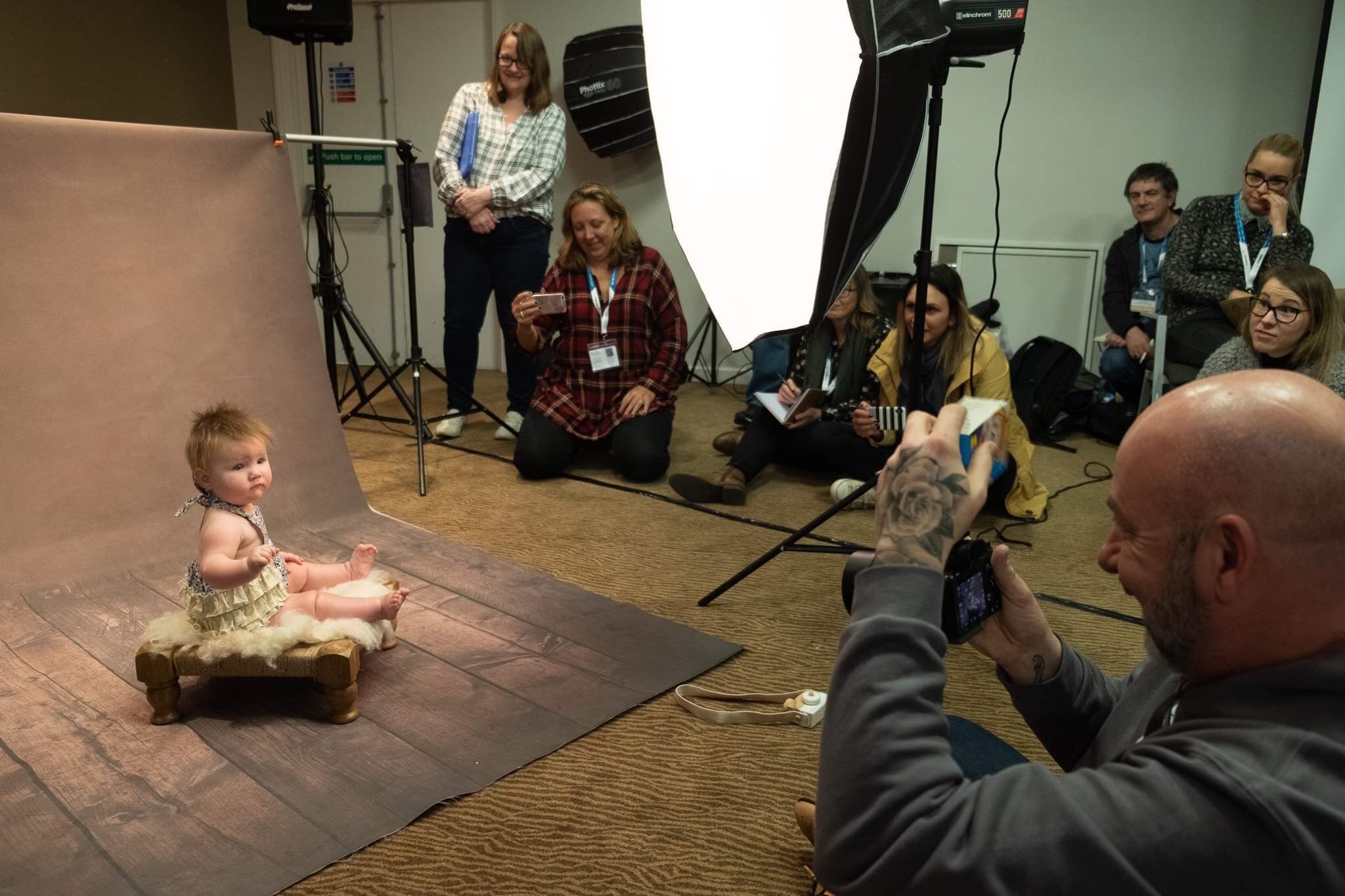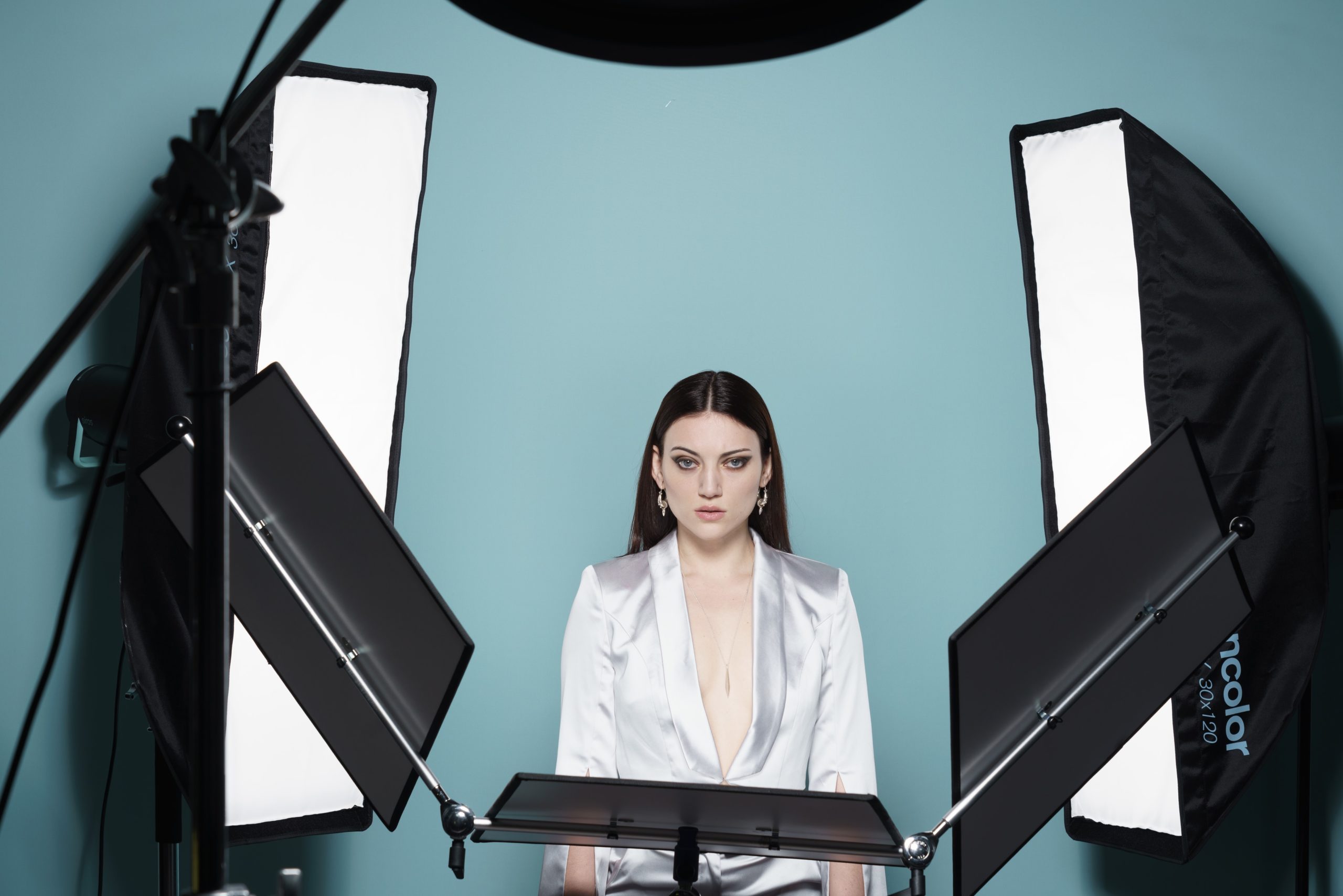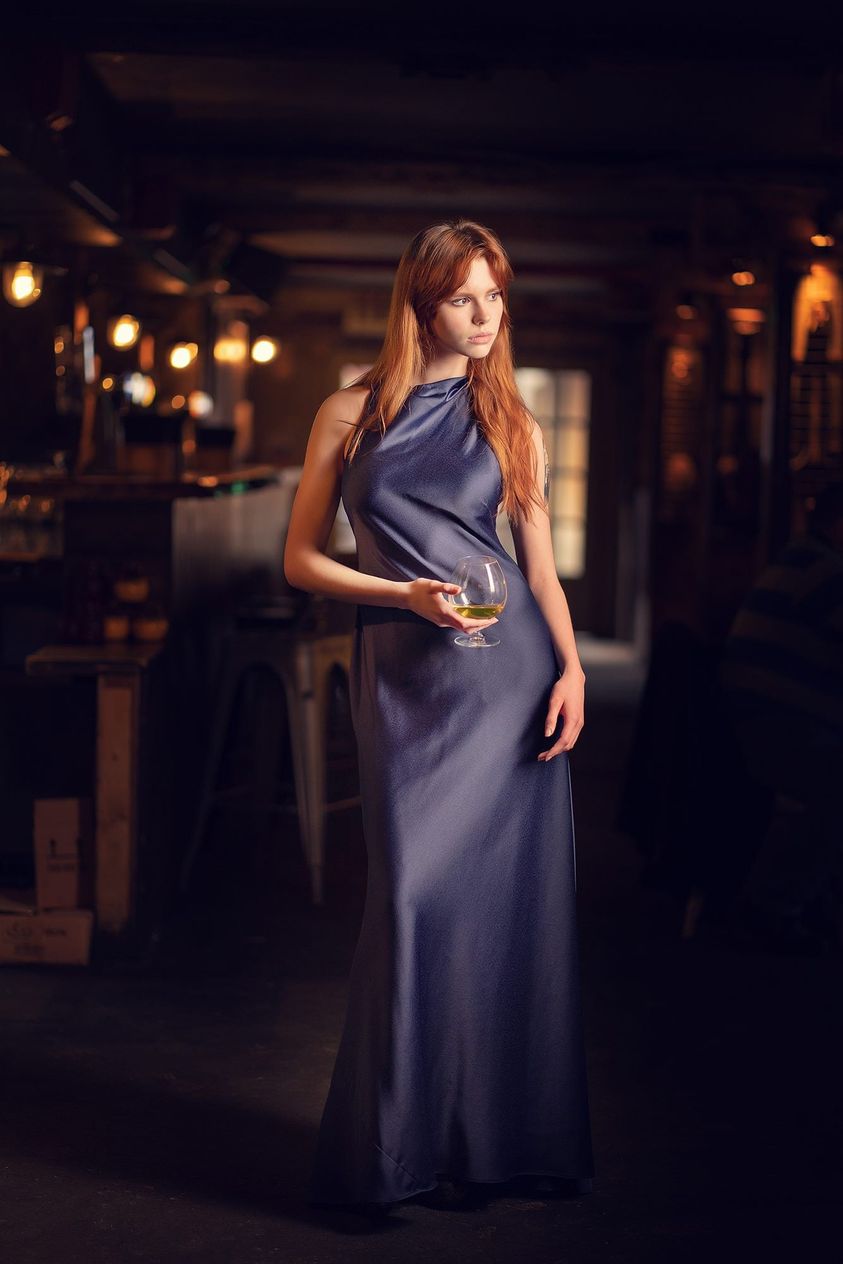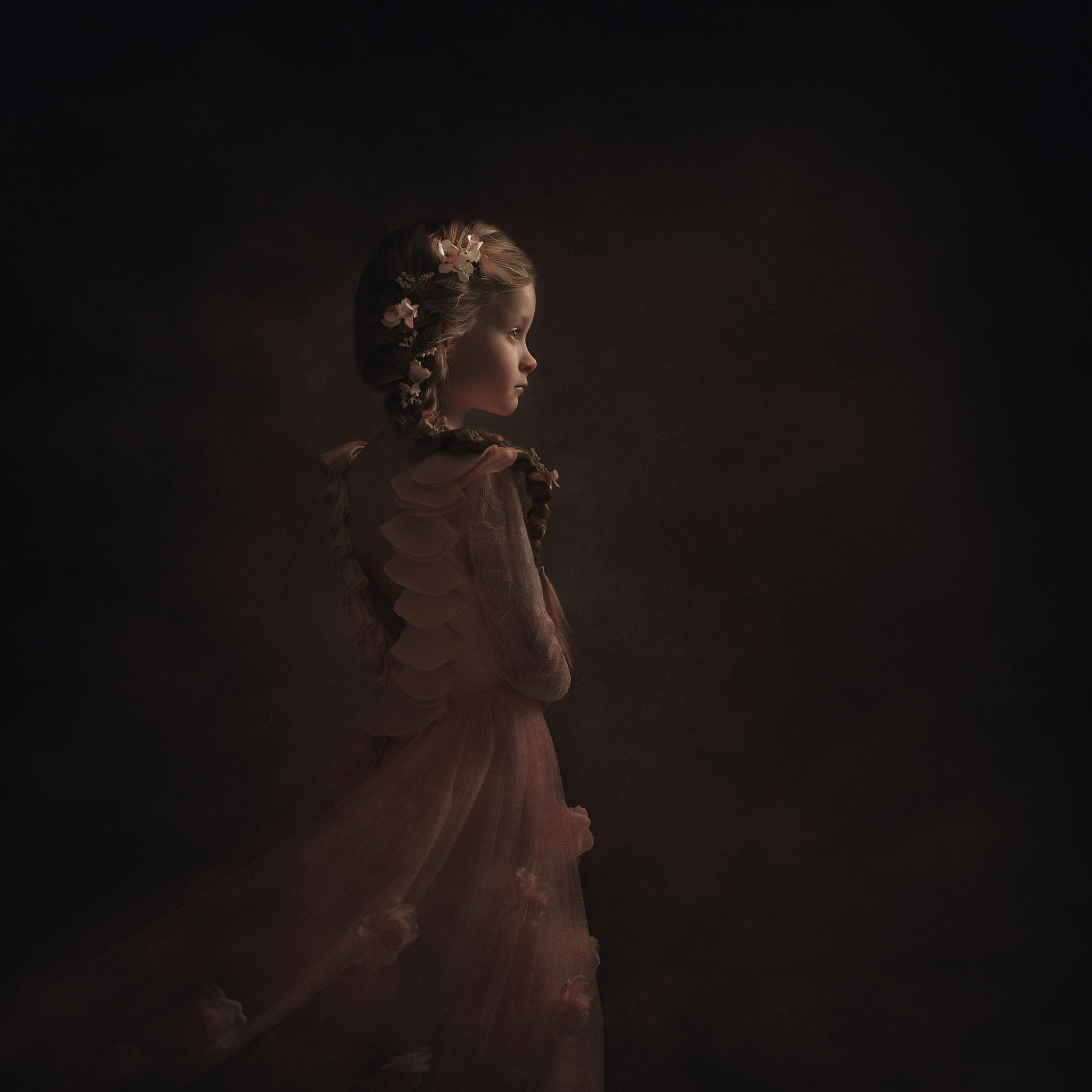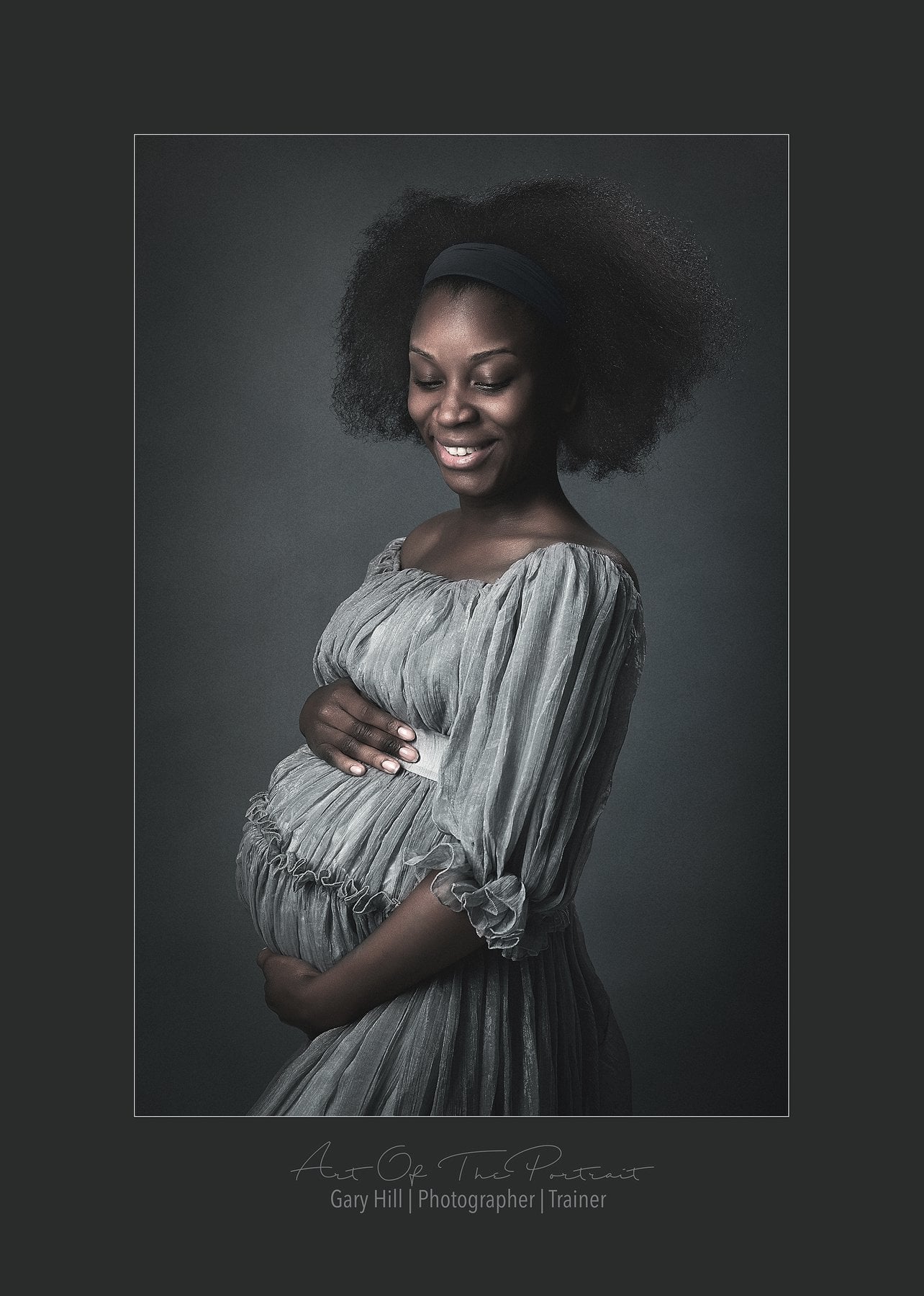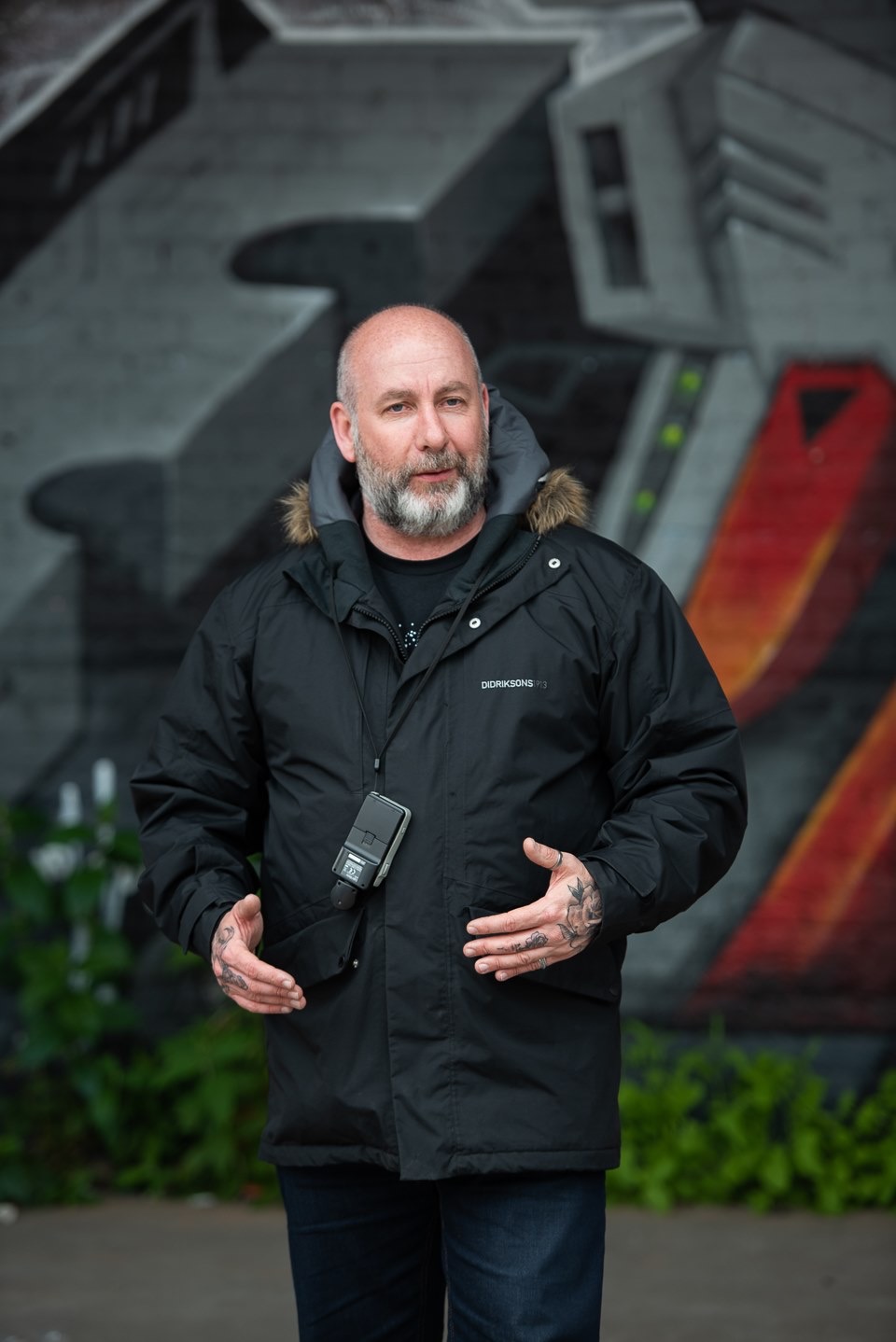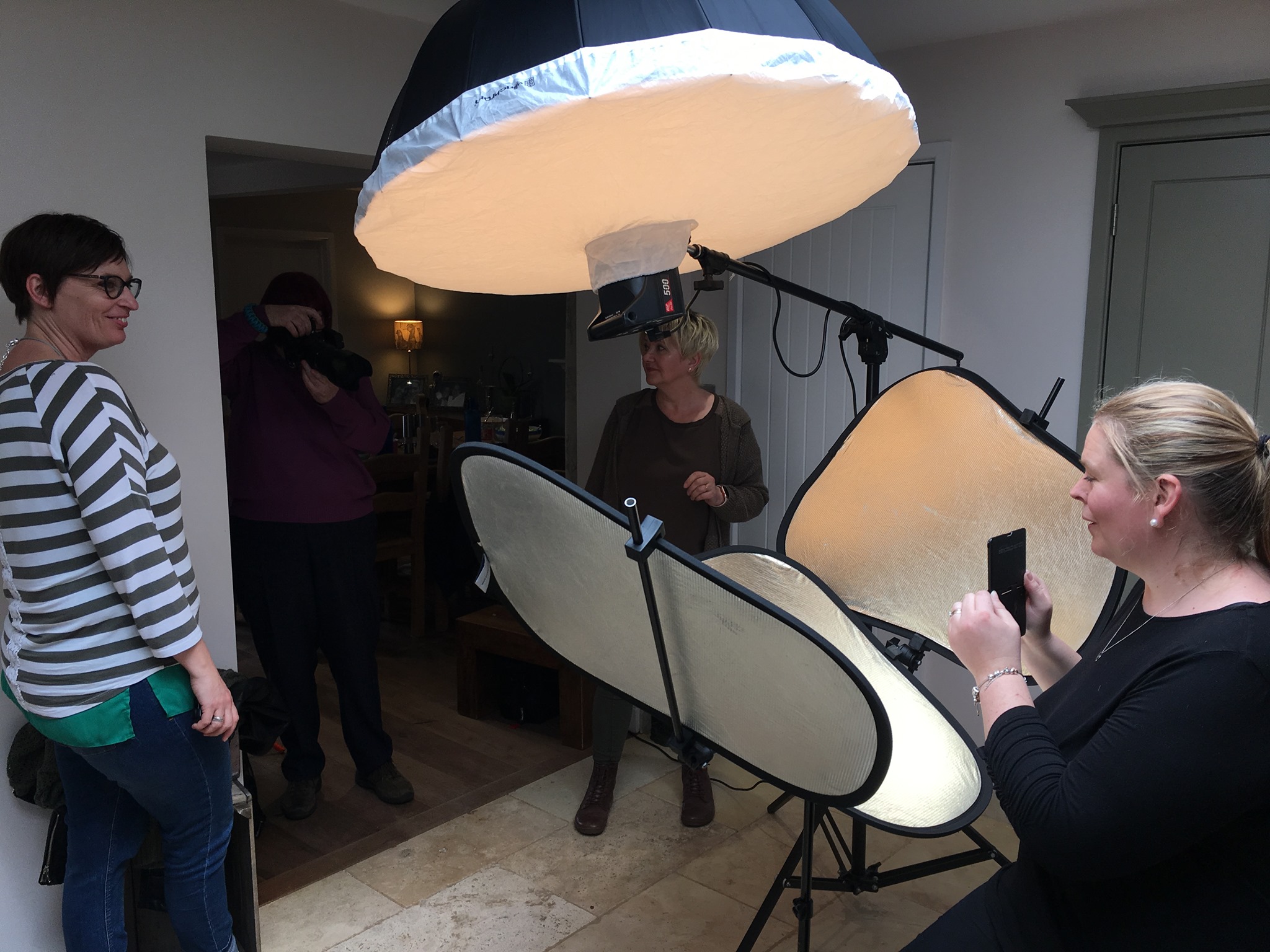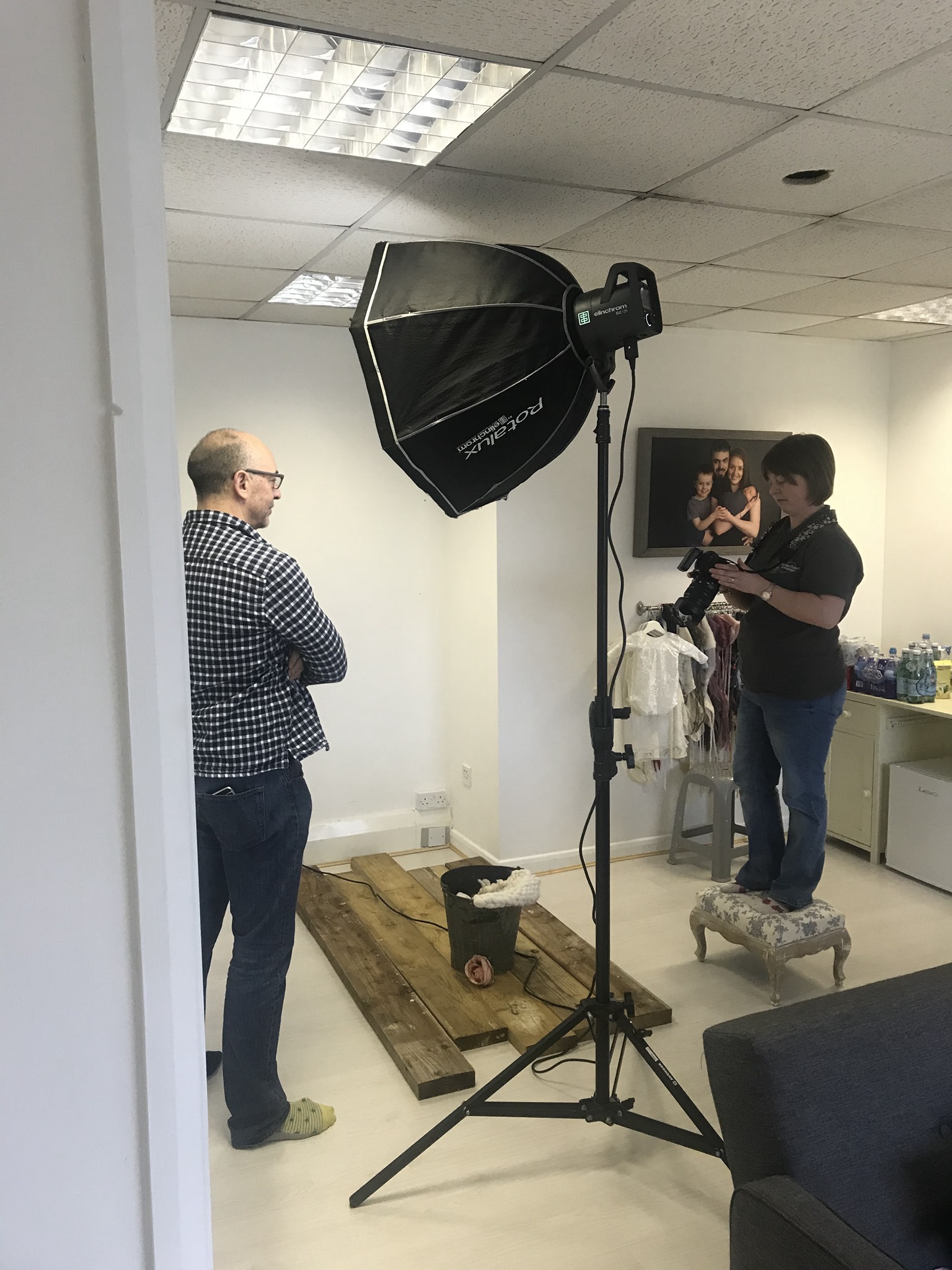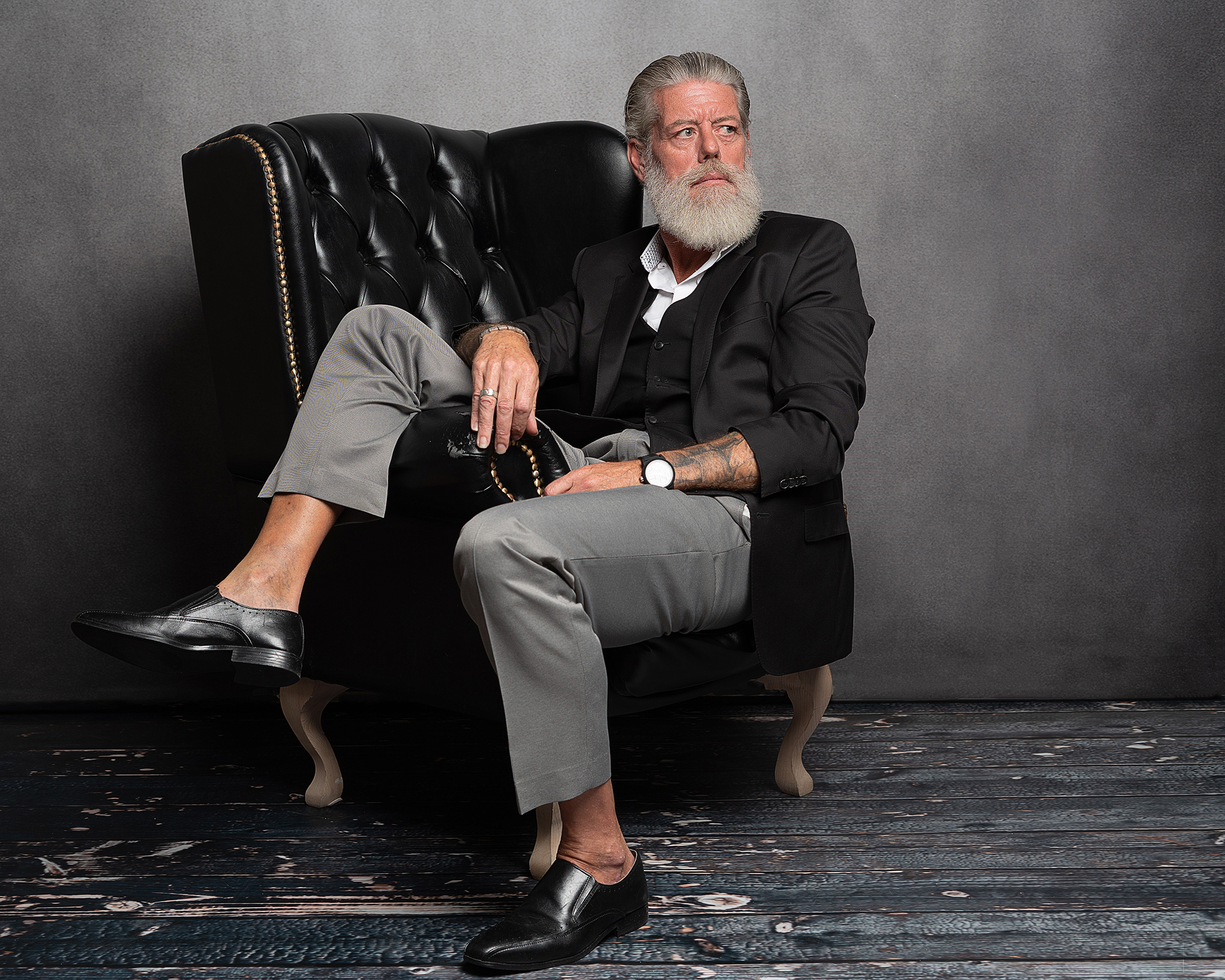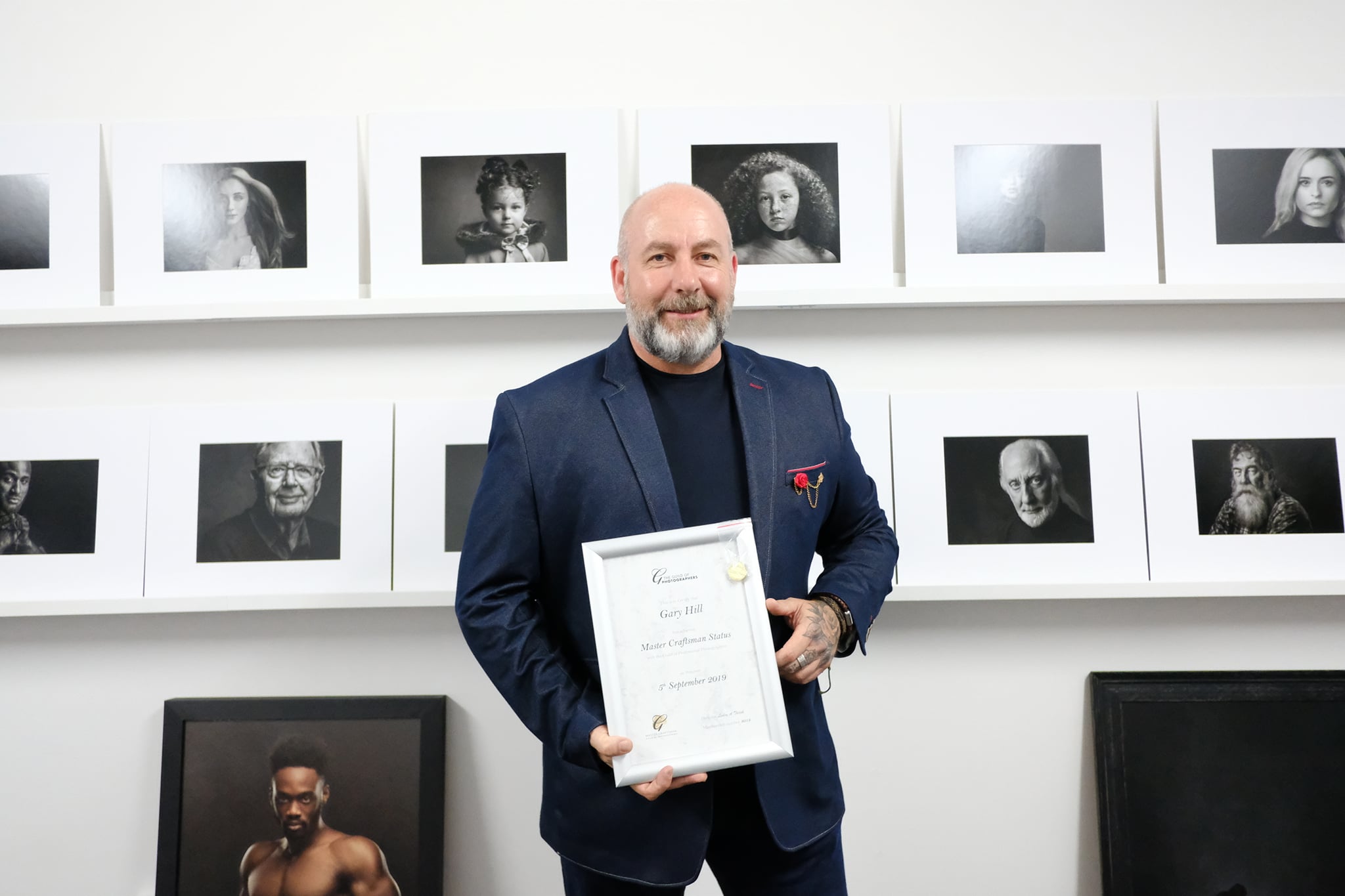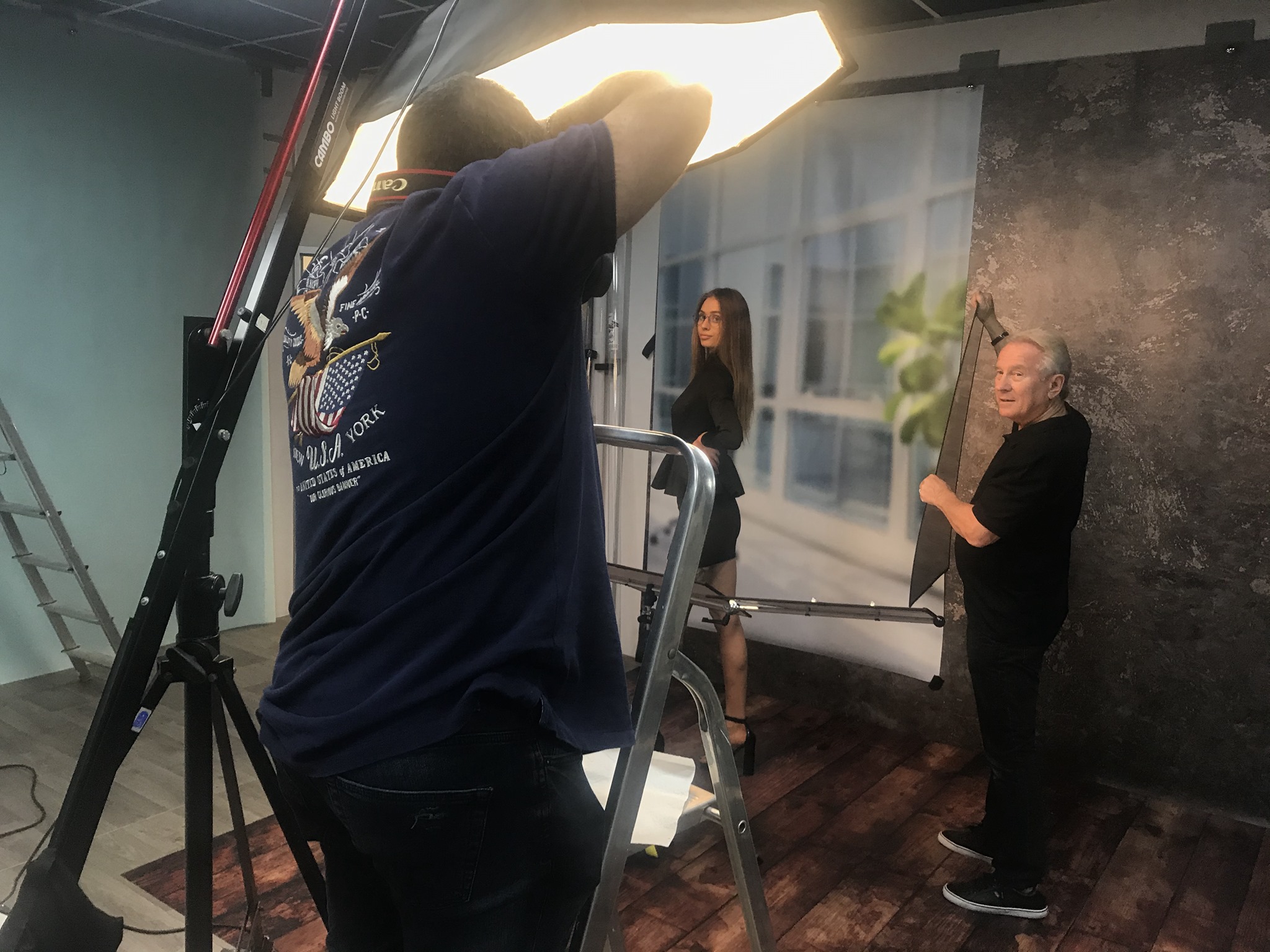Light Modifiers - How and Why We Use Them
Softboxes, reflector dishes, umbrellas and beauty dishes are just some of the modifiers that we have available to us as photographers to attach to our lighting to change the way it works for us. In this article I will go through the basics of modifiers and the how and why they are used. Before we talk about actual modifiers, we perhaps need to check that we totally understand how light is affected by simple rules when it comes to the quality of the light. Now, the word quality is an interesting one. What we mean by quality and the quality of light needed for one situation may be different to another situation. When I discuss quality of light to my mentoring students, I usually split it into two main characteristics with another secondary one as well. The first thing I talk about is hardness of the light. This relates to the edge of the shadow and how that presents itself. If the light source is small relative to the subject, then the edge of the shadow will be a more solid line, and clearly defined so we call that light “hard”. If the shadow is diffuse at its edge due to the light source being large compared to the subject then the light is usually referred to as “soft”. Obviously there are different levels of hardness, all dependant upon the light size to the subject. The next characteristic I talk about is contrast, which relates to the difference in stops between the highlight side and the shadow side in a portrait. The bigger the difference, the more contrast there is. Now people often call the combination of contrast and hardness as harsh light but contrast is often influenced by light position and closeness to subject and a little by the modifier. You can have soft light that is both contrasty or not and hard light that is also contrasty or not, all depends on positions and the modifier. The third characteristic that modifiers affect is the specularity or shininess of the highlights. In simple terms the lining of the modifier if silver will give off shinier highlights than if it is matt white. What modifiers should you use?
Bare Flash
The design of most studio lights is to use a round flash tube to throw the light as evenly as possible in all directions in front of the head. This is great as it helps get it more evenly spread but a nightmare to control as it does indeed go everywhere.So, bare bulb has the odd use but generally not what we use as portrait photographers
Reflector Dishes
Next up is reflector dishes. These go from tiny to fair sized. From little five inch spill kills to 18 inch maxi reflectors. They are usually silver on the inside and fit direct to the head with no diffuser, their job is to control the spill of light and funnel it all straight forward. They are very efficient and give great output to the light but unless the largest ones they are small sources and produce very hard light when used in portraiture, Great for putting spots on backgrounds but I would rarely use for normal portraits unless recreating the hard lightlooks of Hollywood in the 30’s and 40’s or punchy fashion images with models. Reflector dishes are great for maximising the power of the light if used with low powered lights.
A beauty dish is a modification of the reflector dish, comes in various sizes and with a central deflector which prevents the flash coming straight out, it hits the deflector then bounces back into the dish to then come forward again. The point of this is to reduce the hot spot in the middle. Used a lot in fashion and beauty photography, they can provide beautiful semi hard light with crisp edges to it. They work well with good make up and clear skin but can show up blemishes and skin defects a lot. For general portraiture I find personally I use mine very little though I know others that do. I prefer, using my Elinchrom system to use a 70cm deep octobox with deflector disc and single layer of diffusion to give a similar but more gentle effect. In short, reflector dishes can be useful but they are hard light unless used really really close with the larger ones.
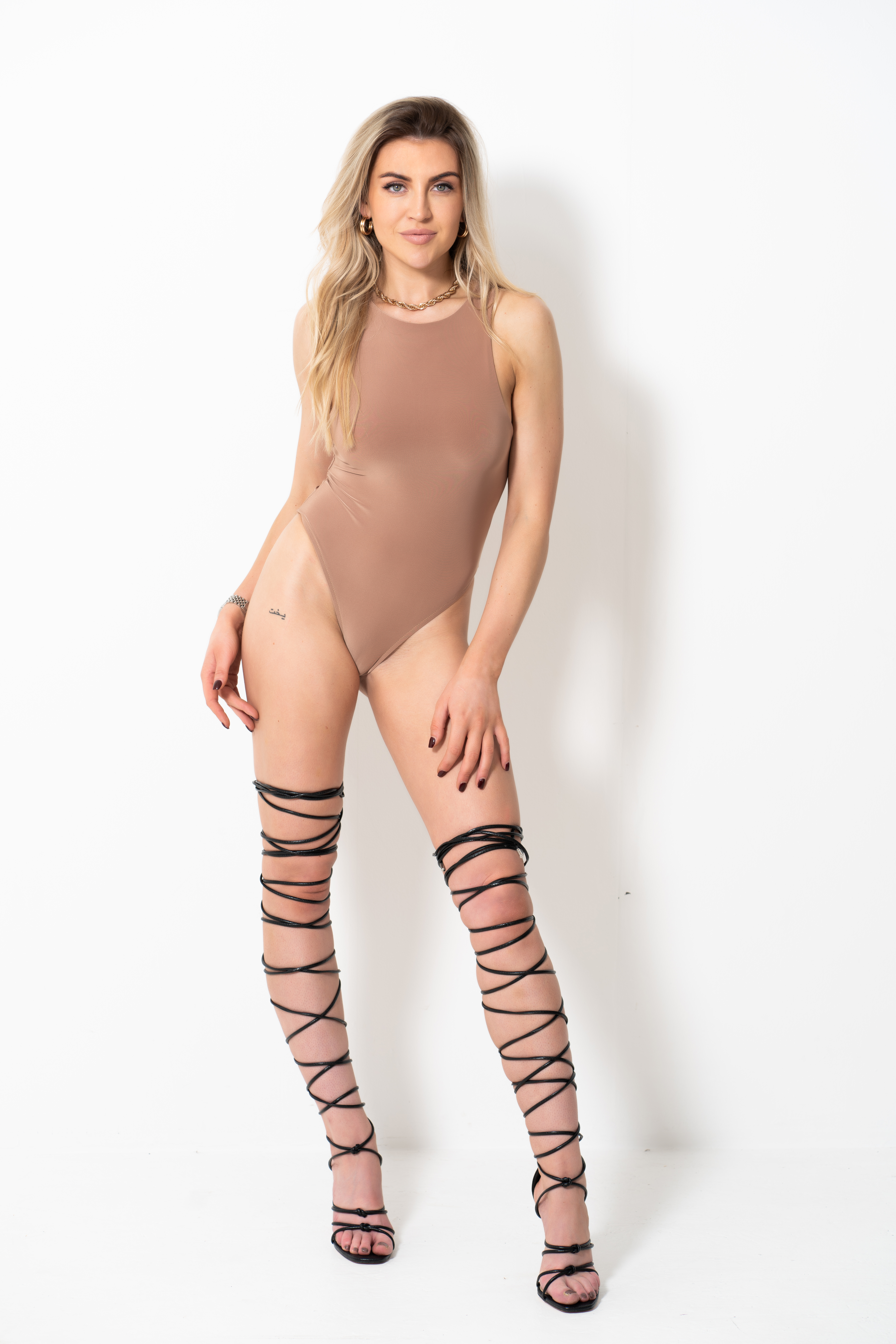
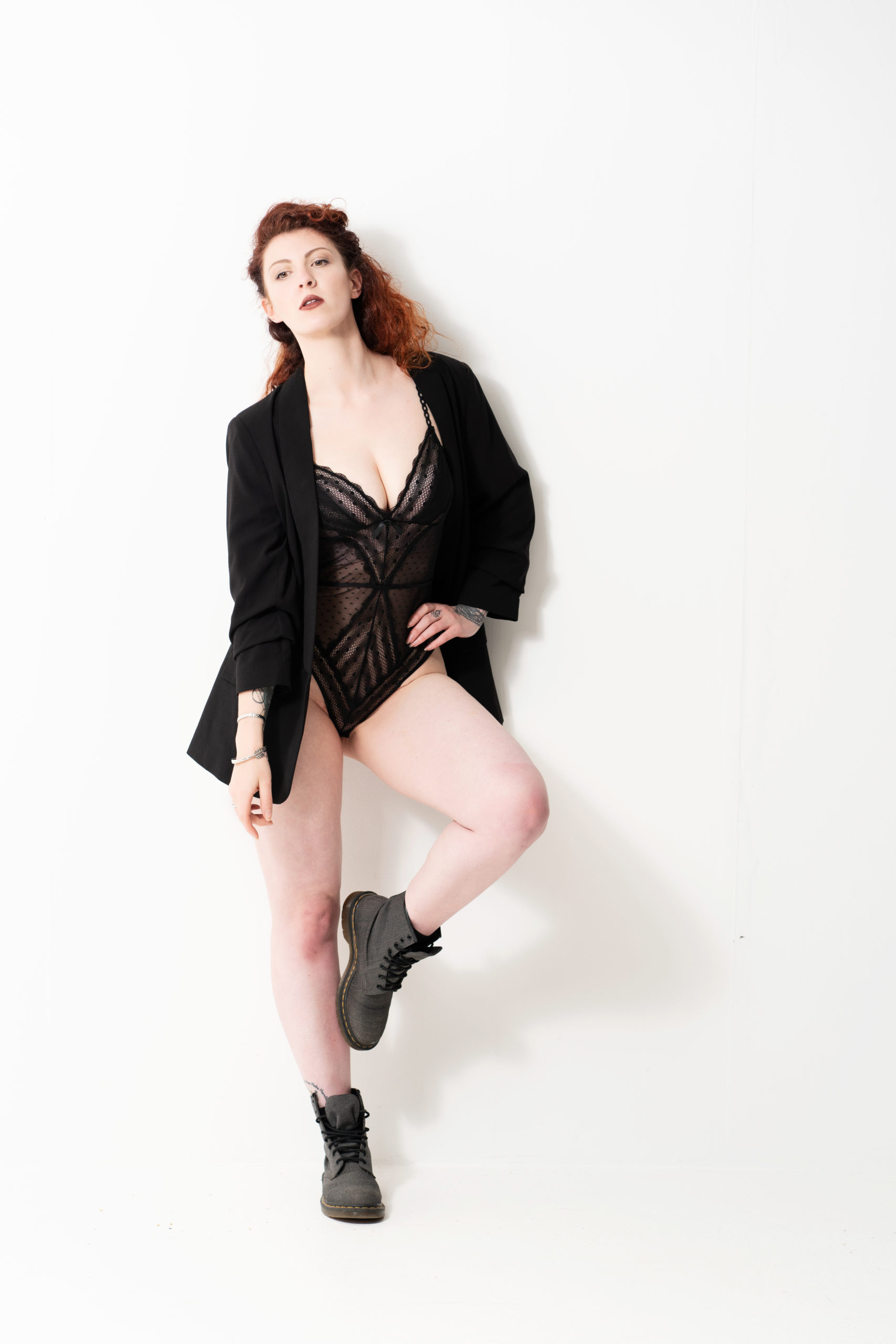
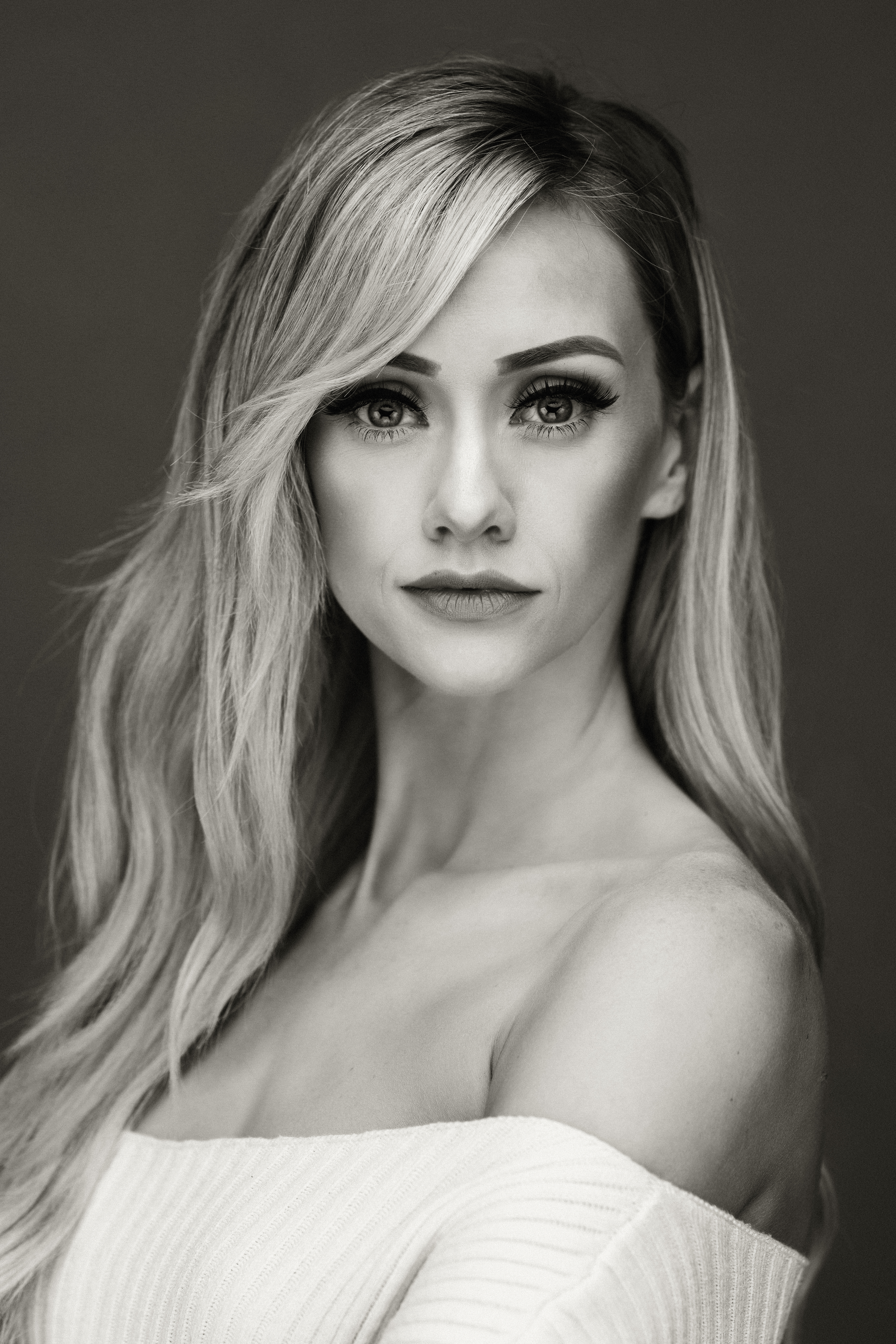
Softboxes
Softboxes are what most people think of when they thing of modifiers. They come in all shapes and sizes from small to huge, and their purpose is to increase the size of the light source to soften and spread it. The shape affects the spread and the size affects the softness ( though you can make them softer or harder by moving closer or further away). The ones I use the most are large octoboxes and strip boxes. As you can guess, octoboxes are octagonal in shape and strips are long and narrow. The strips allow me to precisely control the spread of the light and prevent spill. The big octobox or similar is a really versatile source. It can be pulled back a little to light a family or big group or brought in really close to get super soft light, bringing it in close makes it bigger relative to the subject and bigger is softer when close.
Umbrellas
Umbrellas come in many sorts, sizes and finishes. They can be “shoot through” where the fabric is diffuse and the flash is fired directly though the umbrella towards the subject and the umbrella acts as a diffuser. The other type is indirect where the flash fires into the umbrella and bounces off the inside before coming back out. They can be white or silver or even gold to give different effects to the light. The silver or gold will give a punchier more specular light. The white inside of a bounced umbrella can be a really useful modifier as it is easy to transport, put up and position. Some come with an outer diffuser which adds another layer of softness due to diffusing the light some more. I use these a lot – in particular the Elinchrom deep white 125cm and outer diffuser. It’s easy to get a beautiful quality of light from it in close to the subject. The only downside to umbrellas at times is they are not as easy to control as a softbox and have more spill. Once mastered they are a great modifier.
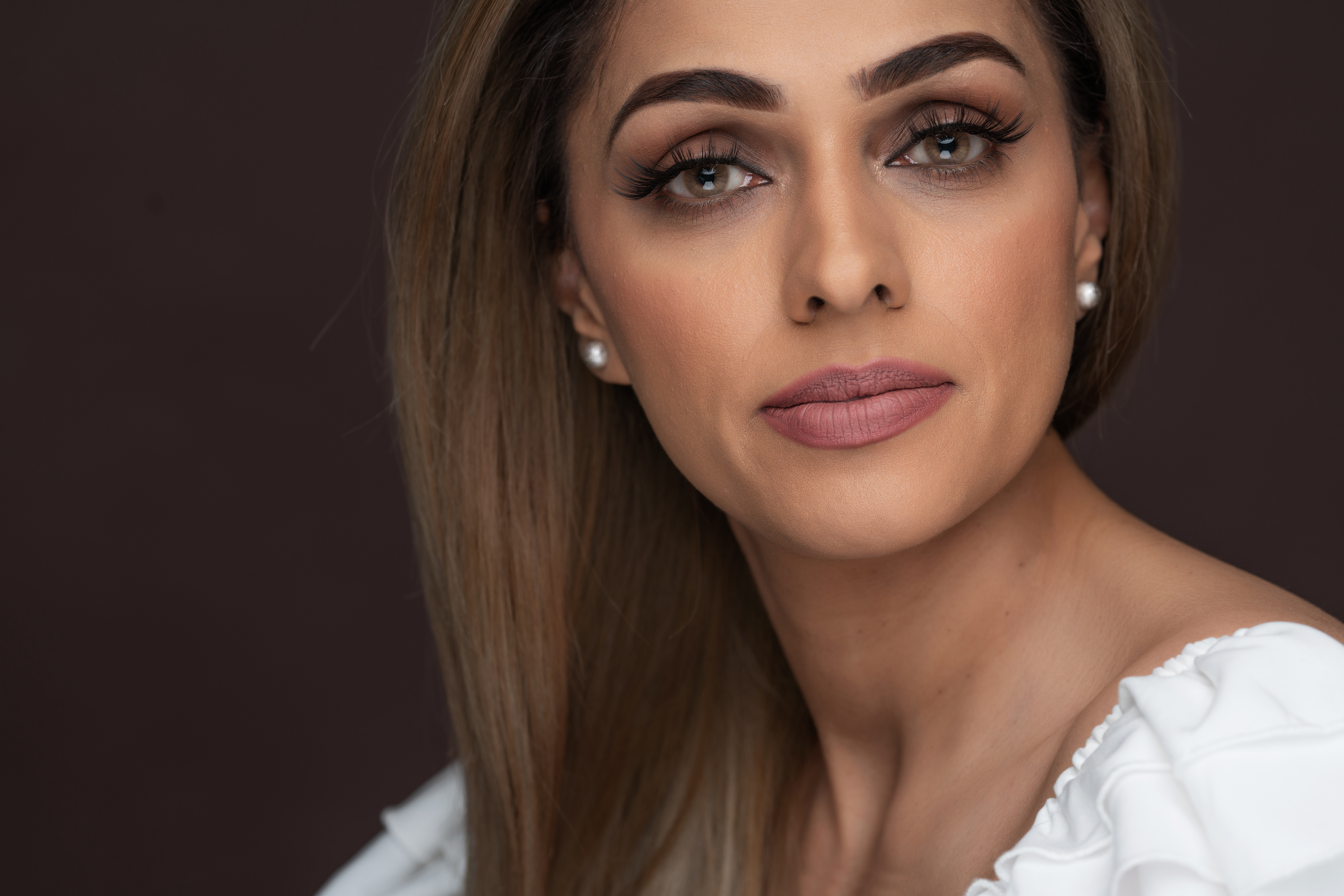
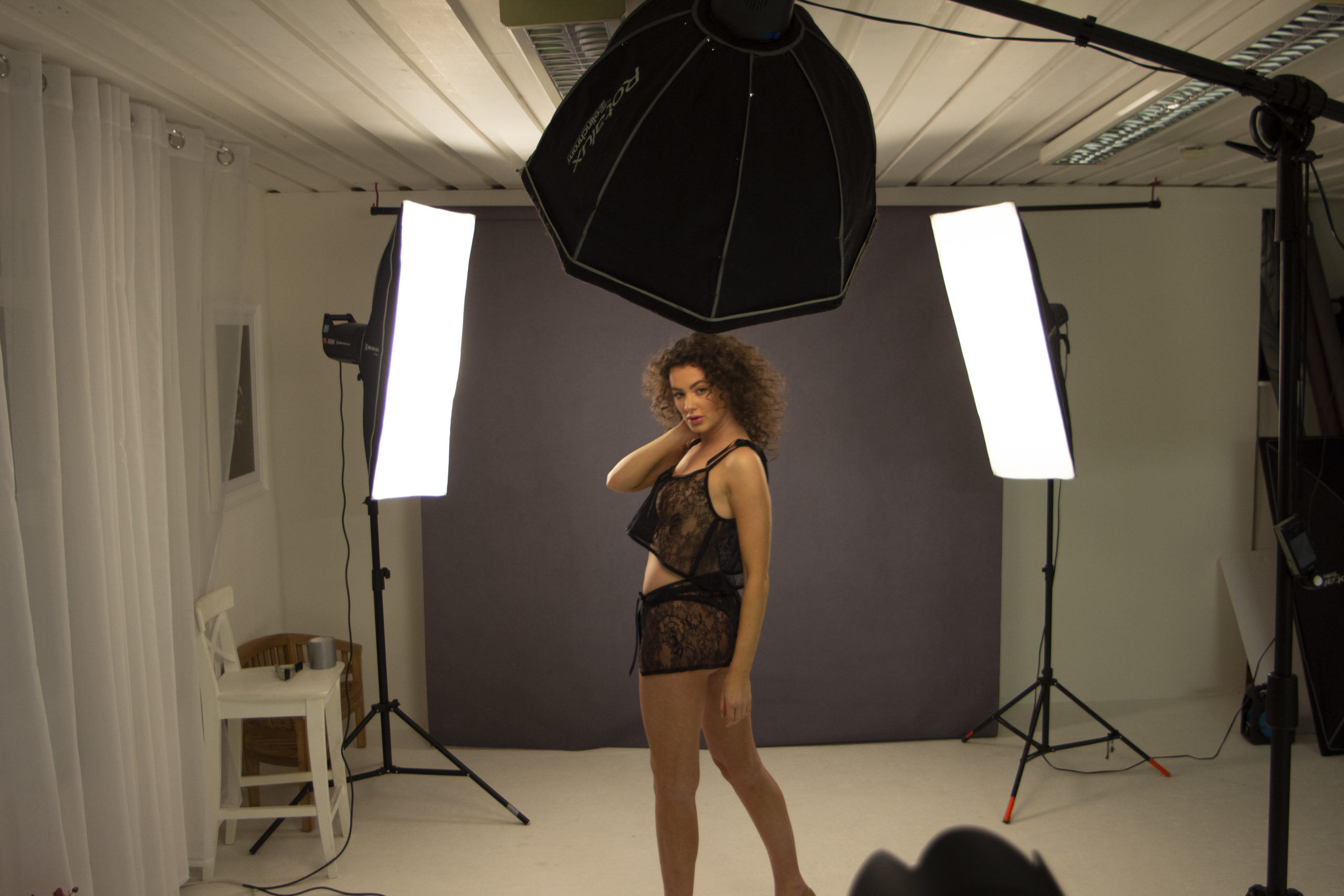
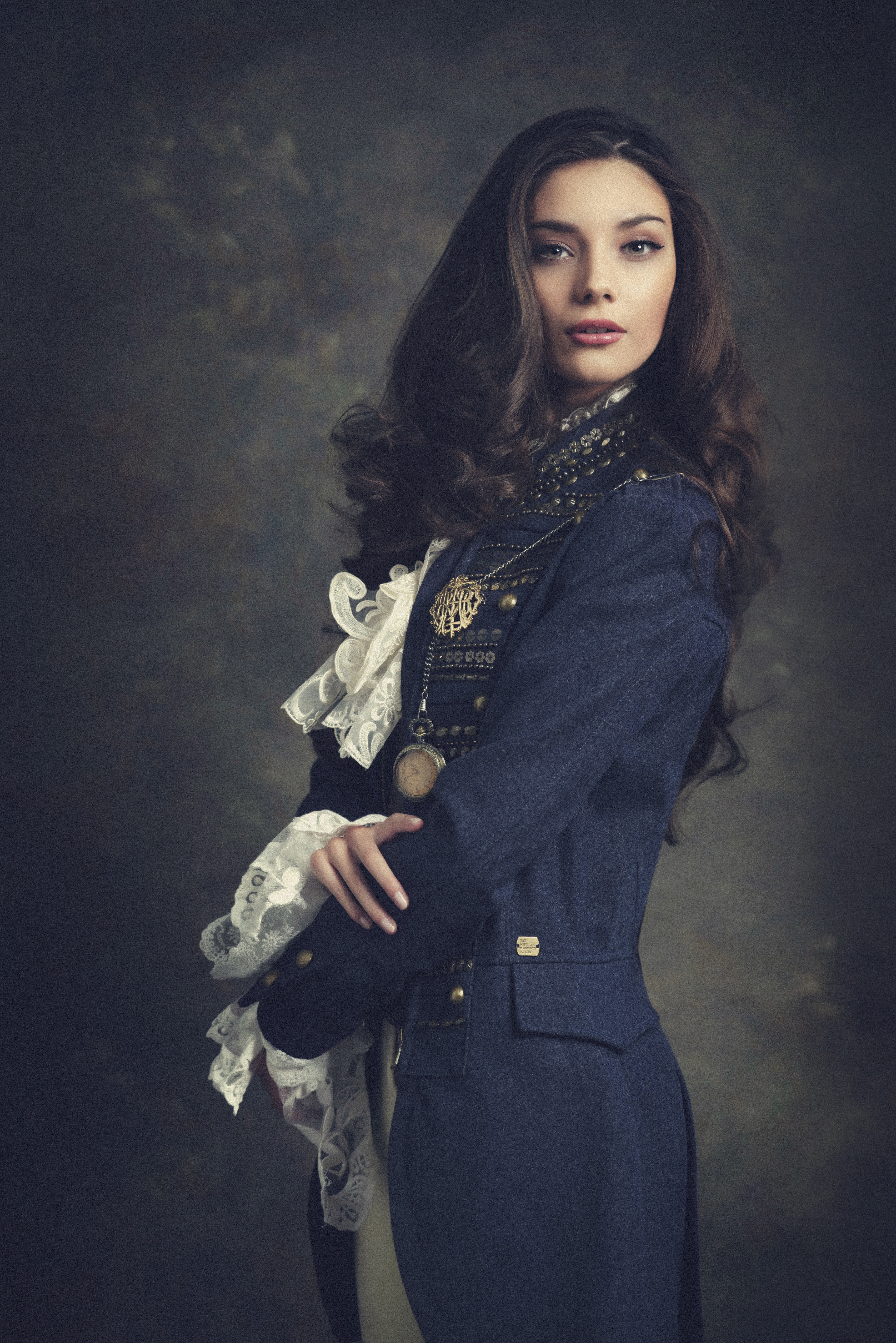
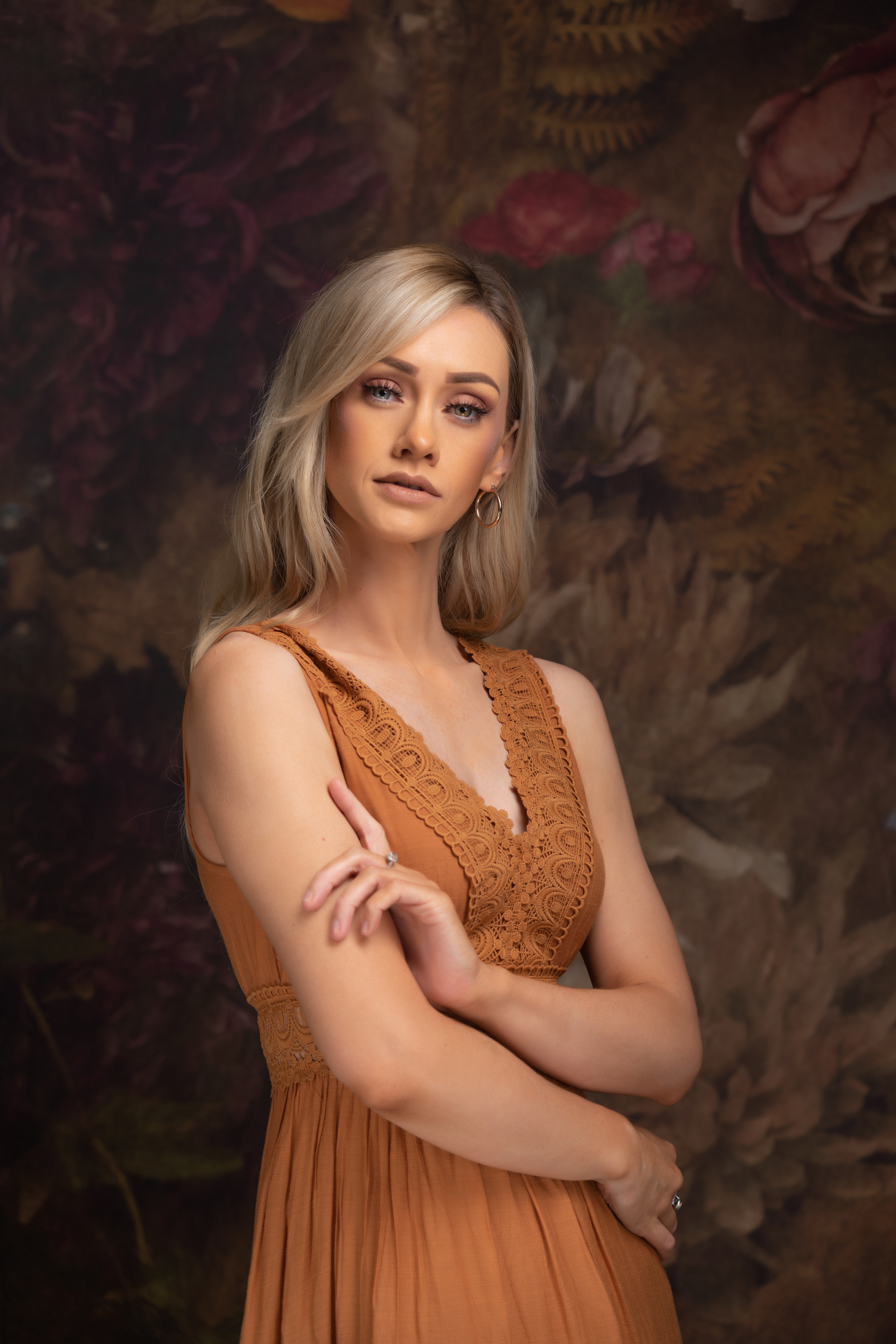
How to light this portrait - Location Portrait
How to light location photography – Belfast. This location is Belfast’s oldest bar. I did a quick shoot while over there offering photography training, to do something a little different. the model is from an agency and her styling is her own. This place was DARK , the background exposure is iso 200, f2 at 1/10th of a second. So set up for that to render the bar lights as is and the rest dark. I couldn’t move the customer sat at the table so had to keep those dark. The key light is a studio strobe in a large softbox, feathered to give a gentle loop pattern with the dark wall camera right acting as subtraction to give me modelling and contrast. The glass was added with coke in to give the impression of a drink within the bar and to add a little storytelling and context. The exposure was set at F3.2 which was the lowest I could get from the light and it’s position, this meant that the background went dark and the lamps didn’t over power the scene. You can see other lighting diagrams with explanation on my blog. How to Light Location Photography - how to pose and light this image
How did I create this?
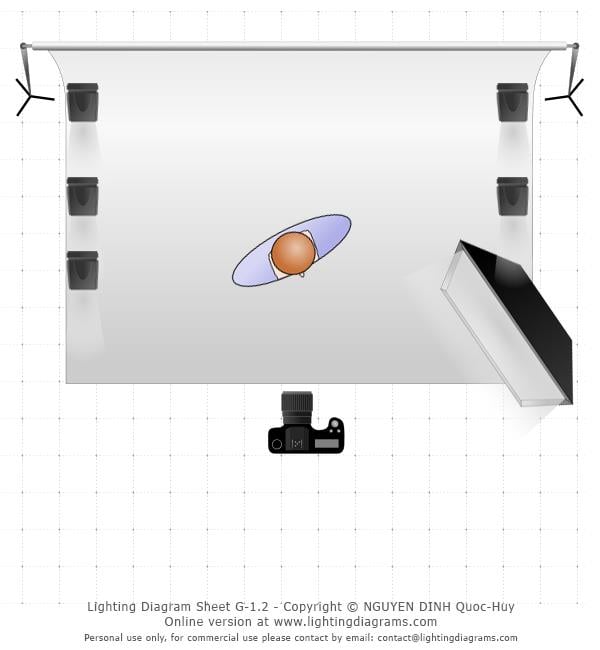
How to light this portrait - The Dancer
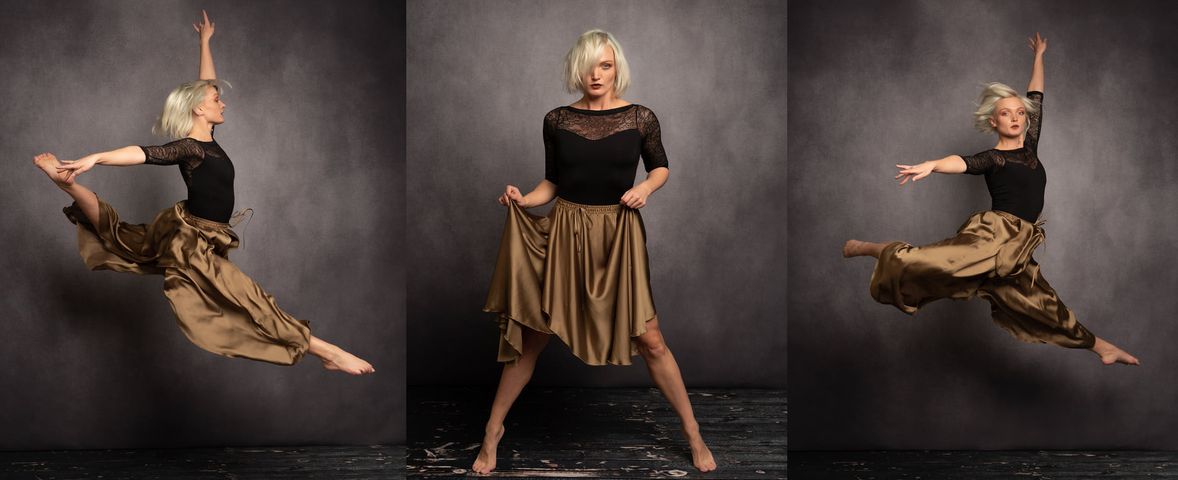
How to Light Dance Photography - how to pose and light this image
The aim of this portrait was some simple dance shots to show off the new backdrops down at Click Props. This is the awesome Silver tones, I actually designed this one. i’ve added in a vinyl floor just to give it a floor.
Katie is a modern dancer, and this is a guide on how to light dance photography. Katie is used to the stage but unfortunately she doesn’t have any work at the moment. However she is also a great model and has been fabulous on our content days at the Click studios in Watford,
How did I create this?
It’s actually much more simple than you would think. I used a 150cm octobox boomed overhead slightly camera right and feathered across onto Katie. I also added a strip box accent light camera right behind in a usual feather position to separate the back leg.
Lots of timing to get the jump mid air, I think these two took jumps took 6 frames altogether. Fast flash freezes the movement even at 1/125th. F8, Iso 100.
The triptych was a different way of presenting a series of shot.
You can find more lighting diagrams elsewhere in my blog.
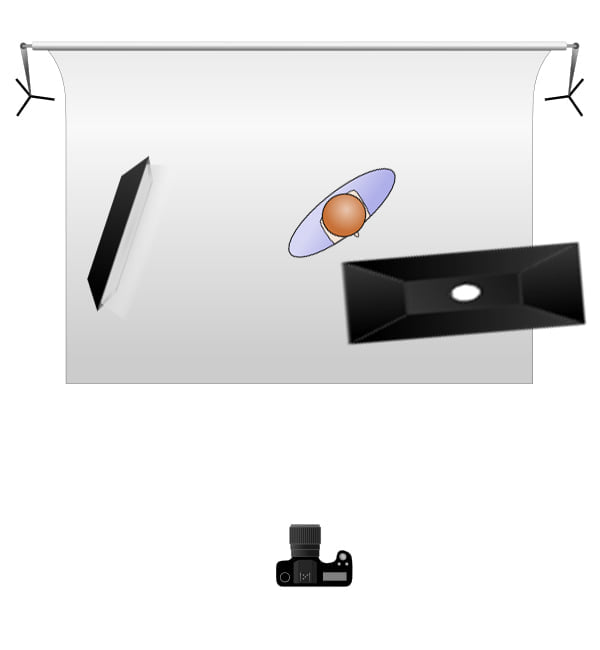
What does it take to become an award winning photographer?
I’ve heard that I am, once again, an award winning photographer. A couple of weeks ago I was awarded my second international Photographer of the Year title, this time in the Commissioned Portrait category, with the Societies of Photographers. In 2017 I was also awarded international Child Photographer of the Year with them. Both of these came after a lot of hard work. I started entering competitions in 2010 or 11, very early on in my career. The reason for this is that I like a benchmark, I like to see where I stand and if I am good enough. Now in my eyes I’ll never be good enough, but this is the passion that drives me, I want to always be better, to spot more details and make better imagery. At the start I had some early success, in fact I still think with regards to number of Gold awards etc those first two years were probably my greatest. But I entered so many images – I was mega keen and not too critical – and I think by sheer weight of numbers I did well.What does it take to become an award winning photographer?
Being creative is as important as being technically correct.
A couple of years later I found I wasn’t being as successful. At the time I blamed the judges, everyone else and moaned a lot – how could I go from hero to zero? I got the odd Gold award, a few silvers and nearly stopped entering. Every time the results came out, I would have a hissy fit and tantrum and well, blame everyone BUT me. The facts were, I was actually getting better, but I was becoming too critical and stopped being creative. The technical aspects were getting better but in return I was losing that spark that made my images different. I was so hung up on getting it right and I was missing the impact I had been showing before. A good bit of time with a great friend, Paul Haley, got me back on track and before long I was doing ok again. Since then, I have had 8 or 9 POTY nominations and the two wins, won the Open Category at the Newborn and Portrait Show and had runner up, over 75 Gold Awards, passed my Fellowship and Master Craftsman qualifications and been lucky enough to judge nationally and internationally. Now I’ve bored you to tears with my back story I’ll get to the point…
My tips for winning awards
Firstly, learn, learn and practice. For the first five years I picked my camera up and shot something EVERY day, experimented, tried, learned from it and tried again, I became able to change settings without thinking about it, knew where light was going to fall from a flash without having to test it and most of all practiced people skills to get the most out of my models. I also discovered that it’s ok to get things wrong! My brain hates this, but to get better you have to fail. I sat there at the Societies Awards night in 2018 (when 2017 results were given out) with my good buddy Cass Davies of Cass Davies Photography when I was expecting to get another runner up and saying to her, I would be getting my bridesmaid dress out again (never the bride) when my name was called. I thought I had been set for another runner up, but the fact was, those failures (whilst not really being failures) had pushed me to nail everything to the best of my ability and also, to accept that if it is not meant to be, it just won’t happen. So, when I dusted myself off, I looked why others had won and learned from every single winner and runner up. I worked harder and nailed more correct details.
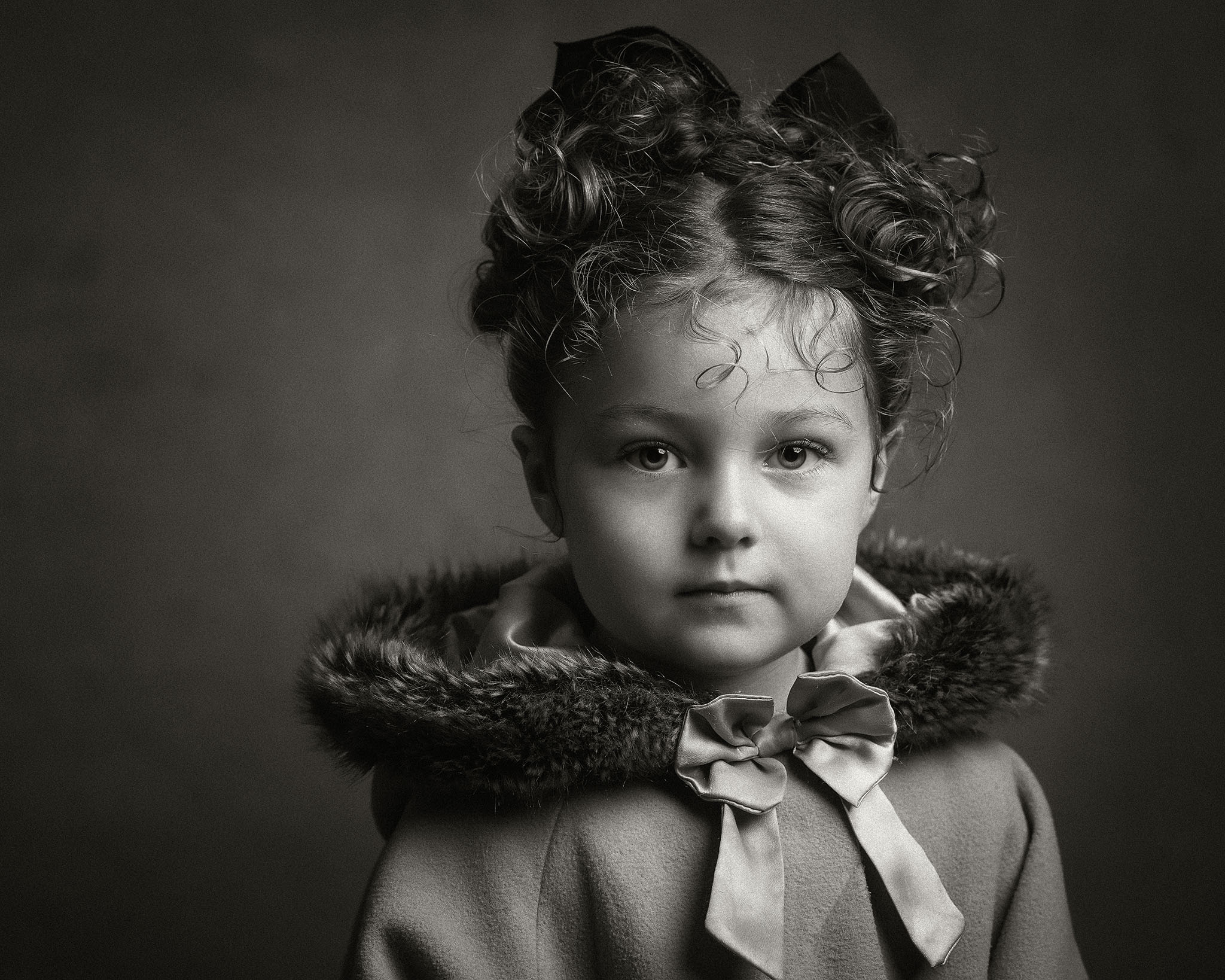
Practice, practice, practice.
The other thing I still do (when not in Lockdown), is I make time to shoot for myself, 1-2 sessions a month, to try things, to hone areas and just to keep trying to get better. So many photographers I speak to don’t do this and then wonder why their creativity is waning or they are shooting the same stuff all the time. Look outside the box, art galleries, street art, fashion magazines and build your own ideas.
As a judge I get sick of hearing, well, It ‘has to be’ fine art style on a textured backdrop to win. Trust me, it doesn’t. It is just that people see one photographer or style doing well and then all copy it and submit. Some do it well and end up scoring high, a lot don’t. As judges we love to see something different so don’t think you have to adhere to a style to win, any style will win if it is done well!
Which style will win?
The other thing I still do (when not in Lockdown), is I make time to shoot for myself, 1-2 sessions a month, to try things, to hone areas and just to keep trying to get better. So many photographers I speak to don’t do this and then wonder why their creativity is waning or they are shooting the same stuff all the time. Look outside the box, art galleries, street art, fashion magazines and build your own ideas.
As a judge I get sick of hearing, well, It ‘has to be’ fine art style on a textured backdrop to win. Trust me, it doesn’t. It is just that people see one photographer or style doing well and then all copy it and submit. Some do it well and end up scoring high, a lot don’t. As judges we love to see something different so don’t think you have to adhere to a style to win, any style will win if it is done well!
Learn all the time
I average between 30-50k of images a year, first few years probably closer to 70k, so I reckon over three quarters of a million images. It is practice and attention to details that will make you a winner so please, get educated, go practice and be inspired. Don’t get bogged down in trends and most of all, have a lot of fun.
If you would like to learn from me, I run group workshops and do 1:1 mentoring for photographers. I can help you to improve!
How to light this portrait - Maternity
This is the gorgeous Tianna Jarrett-Williams, a fellow photographer, who I kidnapped to demonstrate how to light maternity when there was a training session going on at my studio in Preston, Lancashire. This was created and shot literally in a five minutes. So the how is very simple, feathered 135 octobox as key light, 70 deep box as an accent. The ratio would be smaller one at 1 stop less, in hindsight a 1/3 rd less than that would have been even better. The feathering on the key is to just graze that soft light across the front of the bump and also pick out those gorgeous cheekbones, the accent is to prevent total loss of hair against the dark grey background. Camera height is halfway to prevent any distortion and shot on the 85mm at f5.6, iso 50.
How to Light Maternity Photography - how to pose and light this image
How did I create this?
Why I shot it like this
I am going to talk about not just the shot but to the whole final image presentation.
The pose is very simple, the dress was a touch as it was not for maternity, so wouldn’t fasten at the back. This meant I was a little limited as to what I could do. Keeping it very simple with a top and bottom bump hand set up , cheeky angle on the head just looking beyond bump to prevent neck compression then probably said something cheeky to get the expression (Tianna and I are friends so I can get away with it, judge your client before trying it!). The crop is just a simple half length as the dress fit better that way.
SO, into PS after a simple raw conversion and then skin tidy , some dodge and burn to really pop the cheek bones and localised sharpening to bring out the details. Now this dress I have shot probably 20 times and try and make it different so popped it into alien skin to give a colour grading which you see here ( no idea which preset, probably a mix of 2 or 3 ). A vignette was added as I prefer to shoot with a large light source for the quality of light on subject which causes background spill which I can then pull down with a curves vignette. That was the retouch finished but I liked the tones and cohesive nature of this so felt the stroke line and border added to the final presentation, the colours of both are sampled from the image to make the tonal range flow through it all.
That’s it really. A simple but effective shot .
You can purchase exclusive access to maternity lighting and posing instruction videos, along with regularly updated content and ongoing support in a members only group.
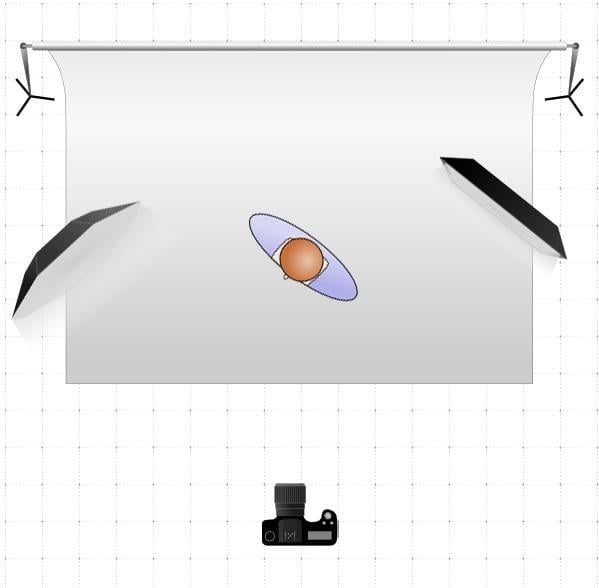
How to use a light meter - video tutorial
In a previous blog post, I explained WHY I use a light meter, and why you should, too. Now I’ll show you exactly how to use a light meter in this video tutorial. If you want to really improve your portrait photography and learn in person, take a look at my upcoming Studio Portraiture WorkshopHow to use a Light Meter
Why Use a Light Meter?
As everyone who has had photography training with me will attest, I am a little obsessed with my light meter. It is one of the most important bits of my kit bag and I would feel lost without it. Let me address the excuses I’ve heard for not using one; I don’t need one. I can judge it in the back of the camera. Digital is free so I just adjust and re shoot until I get it right. Close enough will do, I can fix it in post…
Camera screens are all over the place, I can take the same shot on ten different cameras and review on the screen, they will all be different. Firstly, they are all displaying the embedded jpeg, not the raw file – I assume you are shooting raw so will have applied some processing to the file. Whatever your picture style set up is, will affect the jpeg preview. So, in essence it isn’t accurate. Secondly, everyone has their screen set up differently. My own preference to set my camera screen is to load up an image onto the computer (on a calibrated screen), then pop the card back in the camera and pull it up on screen. I then adjust my screen on the camera brightness until it is as close as I can get it to the calibrated screen. That gets me the best preview I can. The same with the histogram, it is read in the camera from the jpeg so isn’t totally accurate.
Why you should ALWAYS use a light meter in portrait photography
I can use the back of the camera
Digital is free, I’ll fix it later…
Digital is free right? Well, it isn’t going to cost you more to shoot 50 images over ten in money, but it will cost you time. time reviewing, time loading into the computer and time culling, time is money to a professional so it does cost.
Fixing it in post, again, takes time and time is money and secondly, any exposure changes is going to degrade the file, so getting it right in camera is better for the final product, always.
How do you use a light meter?
Ok, so what do you do with it? Once you have your meter, have a read of the manual, learn how to change modes, set shutter and iso. When you have done that, in available light, just point it towards the light source and then press the button. If it doesn’t give you the f stop you want, change shutter speed or iso until it does. Simples.
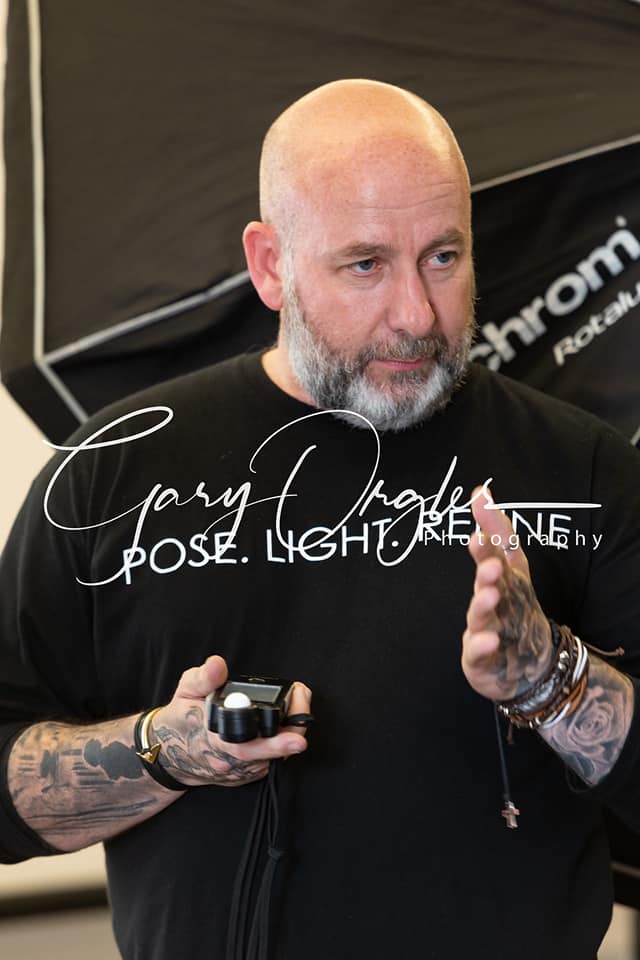
Using a light meter with a flash
With flash, it’s slightly different. Firstly you set it to flash mode, then on most meters you press the trigger button and it will make the flash sign blink, that means it is ready to receive a flash signal to read. You then point it from subject towards the light and then press the flash trigger. It should then give you a f stop (set iso to what you want and shutter speed on meter to 1/125th of a second). The number it gives you tells you how much light is being measured. You then decide if it is what you want to shoot at. Think of it like a measuring jug. If you say decide you want to shoot at f5.6 and the meter is saying f4, you need to turn the light up until when you test it on the meter it gives 5.6, if it said f8 then it needs turning down, just like filling or emptying a measuring jug.
If you want to learn in person studio lighting, take a look at my upcoming workshop which will cover light meters, lighting patterns and much more
It helps you to be precise
The meter also allows me to measure individual lights to control the relationship or ratio between them. If I want an accent light to blend seamlessly with my main or key light then it needs to be at least one stop less as light from the rear appears one stop brighter than it really is. Only using the meter can I measure this accurately. It’s this precision I love the meter for.
Last reason I like it is that it makes me look professional. I often get asked what it is with clients, I tell them and show them what it does, they understand then that I care about precision and getting things right. I also, as an educator, often get asked to speak at conferences to train photographers. I love the fact that the meter allows me to, under pressure, set up a lighting set on stage, shoot tethered to the projector and have it straight on screen out of the camera and get it right. It builds people’s confidence in my skillset.
Review of Photography Mentoring
I choose 1-2-1 photography mentoring with Gary Hill so that I could take advantage of all his time, knowledge and experience. Having followed Gary for a few years, I loved his style of light; how each individual picture captures features of the subject making his work extremely noticeable. I chose Gary because I wanted to push myself and tweak bad habits I have as a photographer. I wanted to learn more about different sources of light and how it can change a whole image using different lighting techniques. Having joined The Guild of Photographers I wanted to push myself to awards higher than the bronze awards I was already receiving. I knew Gary was the mentor to do this.
I had photography mentoring with Gary... this is my honest review.
We covered lots
I spoke with Gary leading up to my 1-2-1 about the areas I wanted to cover; gels, posing, how to shoot on a white backdrop, headshots with the triflection, full length shots using natural light, one source or light then introducing a second light to change the image completely.
The day was jam packed of tricks, helpful tips and lots of fun and laughter. Gary arranged two models who were very relaxed. There was no pressure to understand quickly, if you didn’t get it Gary would explained it until you did.
I learned so much
The lightbulb moment for me is my confidence this is the issue with me, Gary taught me simple methods on how to spend more time capturing and trying out new things and getting it right in camera then spending very little time to edit. He built my confidence then and now, Gary’s after care is great he never stops pushing or helping you grow.
The workshop has helped build my confidence and style as a photographer I’ve gone on since to win high bronzes and a silver award with the guild.
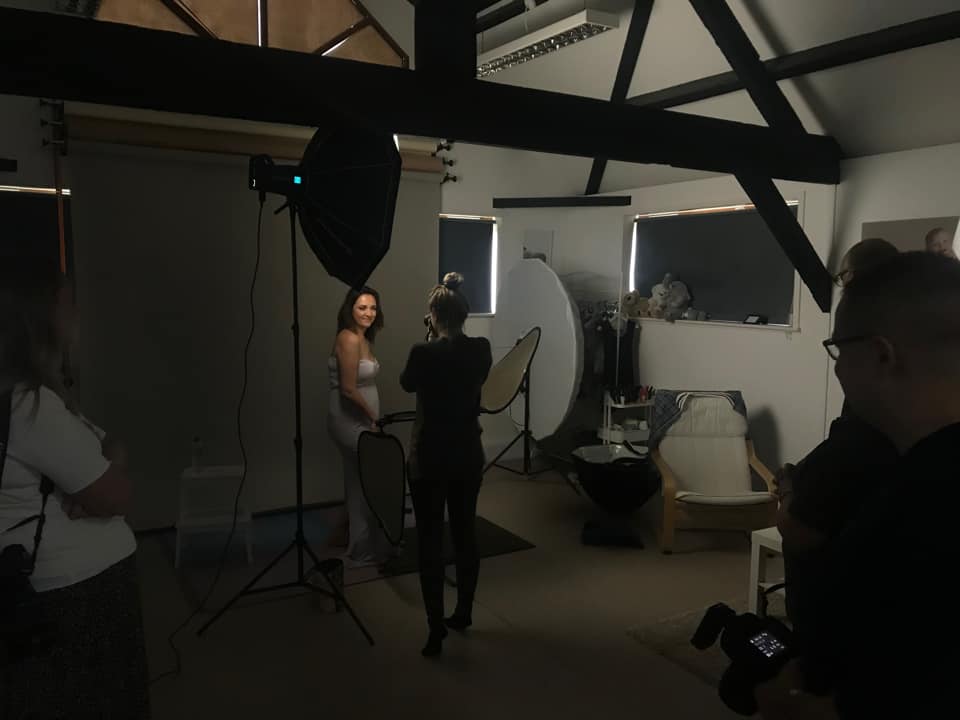
I’ll book again!
Having completed this 1-2-1 with Gary it won’t stop me from doing so again, there’s so much to learn and grasp with photography. I loved watching him work the camera and the lights. Overall I had a wonderful experience and hope to return again this year!
When I return again I would love to cover more with family posing
The overall experience is just what I wanted to get out if it. Gary is a fantastic mentor.
Lindsay Betts Photography
Why I Shoot Timeless Portraits
A portrait for me, has to have something more than just be a representation of the person you are photographing. It has to have connection and a feeling. When I was learning my craft, I studied so many images and I was always drawn to classical posing, simple styling and good lighting. I teach different genres of photography, but timeless studio portraits is by far my most popular course. If you’d like to find out more, you can take a look at the training page of my website, or get in touch to discuss it with me.Why I Shoot Timeless Portraits
When I look back at my portraits over the years, there is a theme of timeless and traditional running through most of the. Over time, I found my own style developing along those lines and I wondered why.
I originally loved shooting fashion images, images that were current and some would say trendy. But as I developed and evolved, I found that both myself and the people I photograph appreciated the fact that I had developed a timeless style.
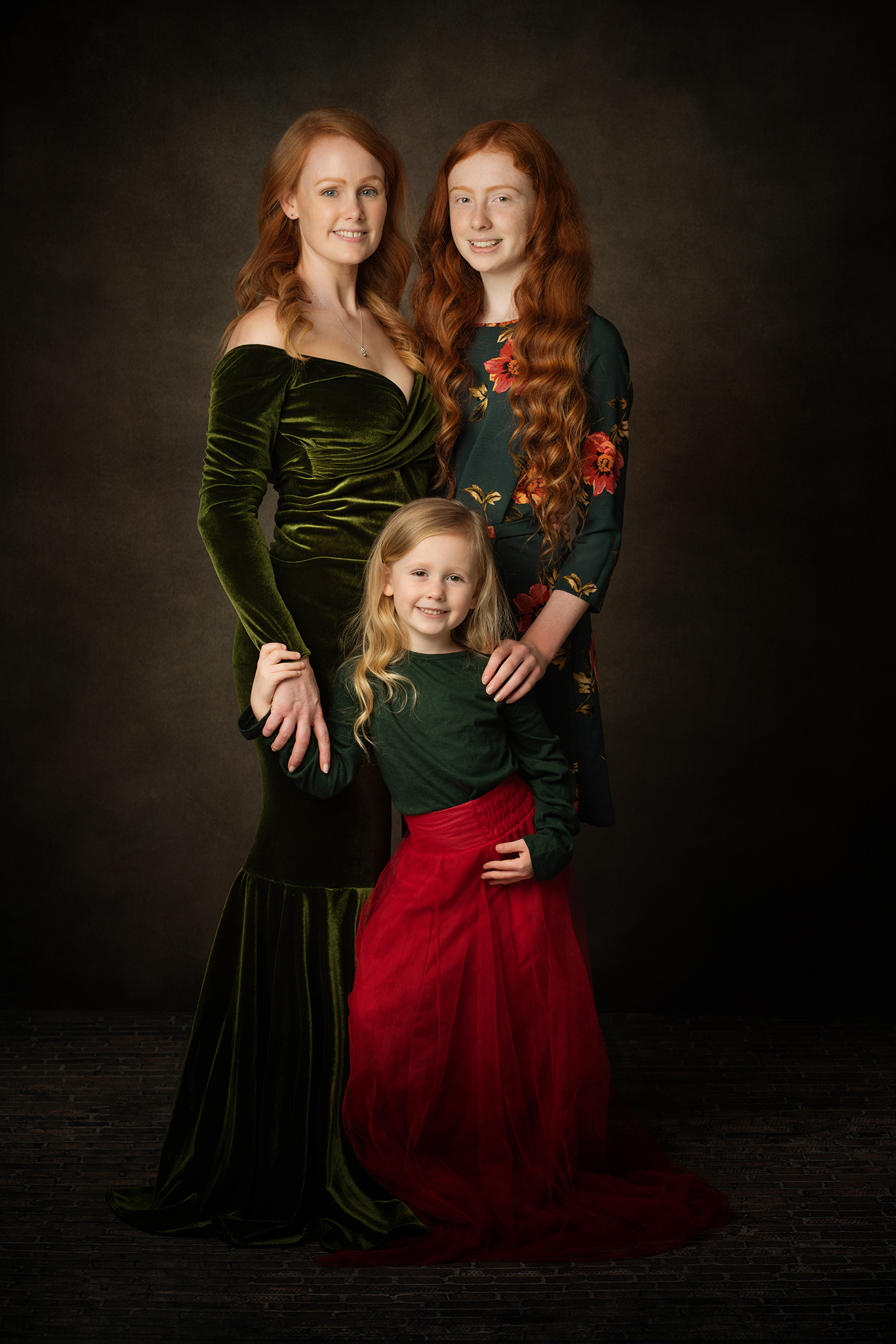
How and Why I Shoot Timeless
To achieve timeless portraiture, I try and avoid my subjects wearing overly fashionable items, opting for classic clothes and accessories that won’t date instead. The reason for this is that a portrait that is going to be displayed on a family’s wall is a big investment. Not only the cost of the product but also, the time and effort into getting the sitting booked, the planning of the clothing and turning up for the actual session. Add in the cost of a wall art portrait and it’s a commitment. So for me, I want them to have photographs from their photoshoot that are not really going to date.
Photographs that will stand the test of time and be there when that child is no longer living at home. If they never ring their parents while at university, but the parents walk down the stairs and see that wall art in the hallway. It reminds them of the time when they were together, adding to the positive experience of the photoshoot. That way, the investment becomes much longer lasting, and the value or it immeasurable. That to me is why I love the timeless portrait.
To learn in person about timeless portraits and family photography, check out my upcoming workshop.
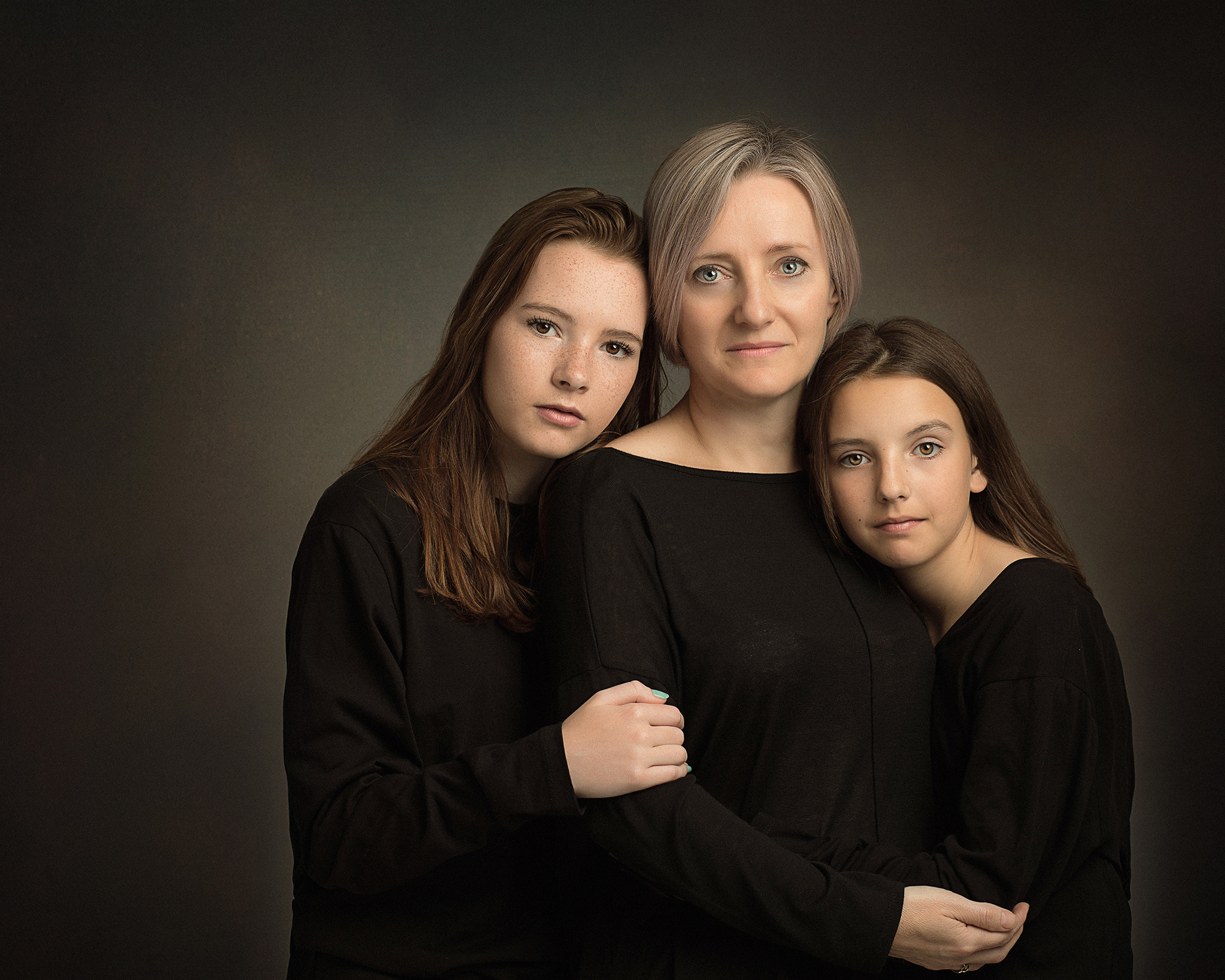
Five Important Rules for Studio Lighting
Learning to use studio lighting can be a minefield at first, it takes practice to get it right but it helps if you stick to the basics. Would you believe I still use only one light approximately 90% of the time, for the first two years of my photography career, It was all I used for clients, one light and a big octobox. I practiced, I refined and eventually mastered that one light to get it to do what I want, but now ten years on, these are my tips for anyone starting out with studio lighting or who is looking for studio lighting training. If you are interested in learning in-person, check out my upcoming studio lighting workshop. Five Important Rules for Studio Photography Lighting
1. Light comes down
I regularly provide studio lighting training for photographers at all different stages. The first rule is that all photography light patterns rely on the shadow from the nose coming down, so get that light higher than the head, golden rule for me, softbox up to 1m in diameter, bottom level with top of the head if possible. Over 1m, bottom level with top of the shoulders. We get used to seeing those nose shadows going down with the sun in the sky and ceiling lights so, while we might not always understand why low lights look wrong in an image at first glance, we will see it as wrong. Light coming from below the face is often referred to as “horror lighting” – imagine telling a horror story with a torch pointed at your face from below the chin, and you will understand!
2. Light should be soft
Unless you are deliberately going for an edgy, high-fashion look, clients will always look best in soft light. So master a big soft modifier and if you haven’t got one, consider a scrim in front of your small modifier to make it bigger. Hard light can work well in the right situation but if in doubt, soft light it out.
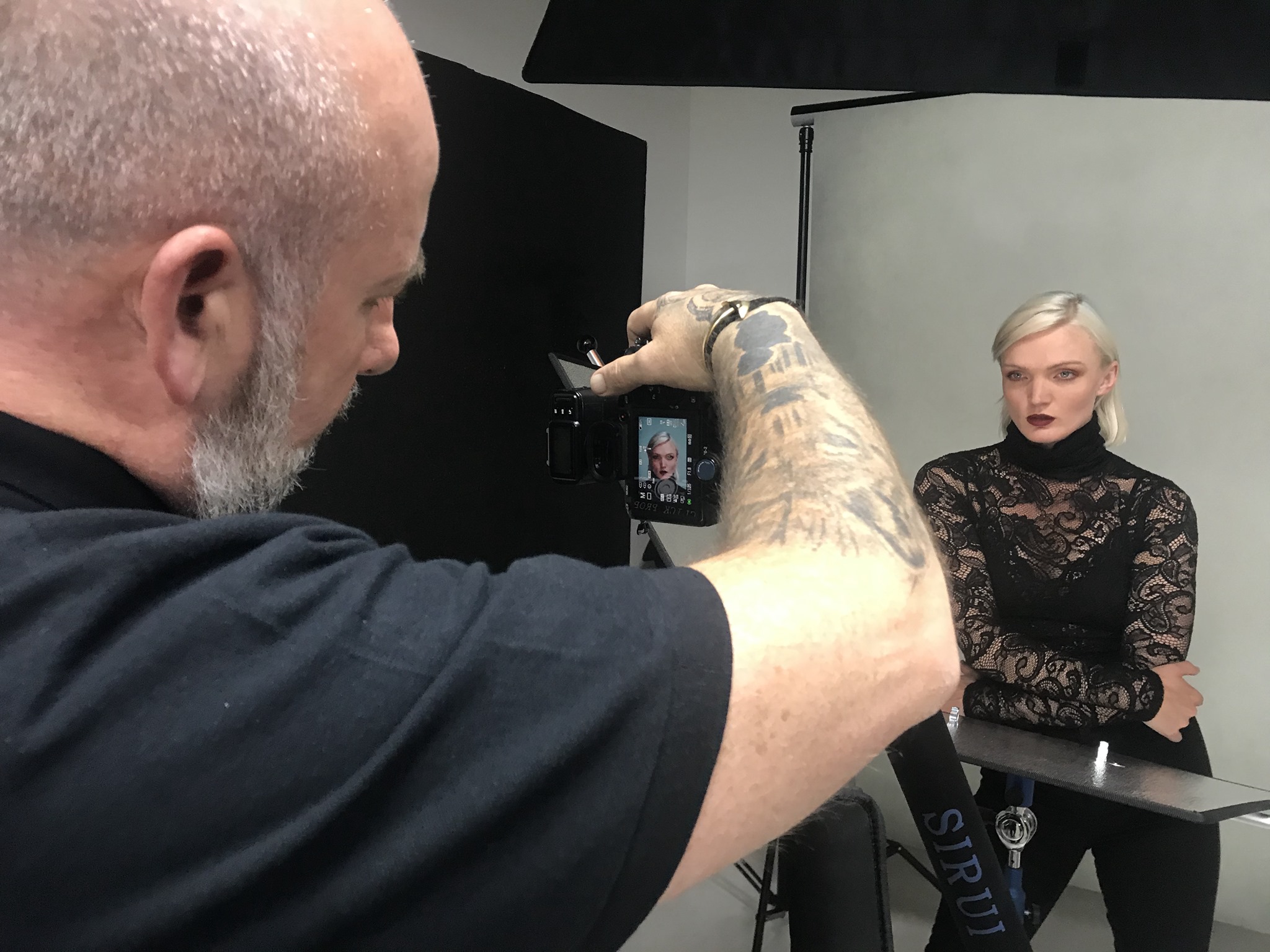
3. Get your exposure right
When I’m running studio lighting training, it’s important to get a good exposure – get it right in camera. Yes, you can alter it in post production but, changing exposures always degrades the file so if you can get it right in camera, do. My own preference is to use a light meter, so you know everything looks good and is correctly exposed before you press your shutter. You can find out more about why and how to use a light meter in this blog
4. Learn to use a grey card
It’s such a tiny tool in a shoot but it really helps you with consistency. If you are doing multiple set ups and different backdrops, especially with babies, it will just help you get those skin tones the same. The two minutes it takes to get a grey card shot in every set up will save you hours of editing and adjusting when your client wants to purchase a multiple aperture frame.
5. Buy good modifiers
A light that is inexpensive can give you great results if you put a good modifier in front of it. Good diffusion will make that light lovely and soft and help with hot spots. So, if funds are tight, spend it on a good modifier. Be aware also of mixing brands, in particular at the cheaper end of the market. I’m lucky to be an Elinchrom and Flash Centre Ambassador so exclusively use those as they are great kit, but I have been to studios where they have had different brands in their modifiers and have caused issue with colour balance in images when using two or more lights. Buy right and buy once.
